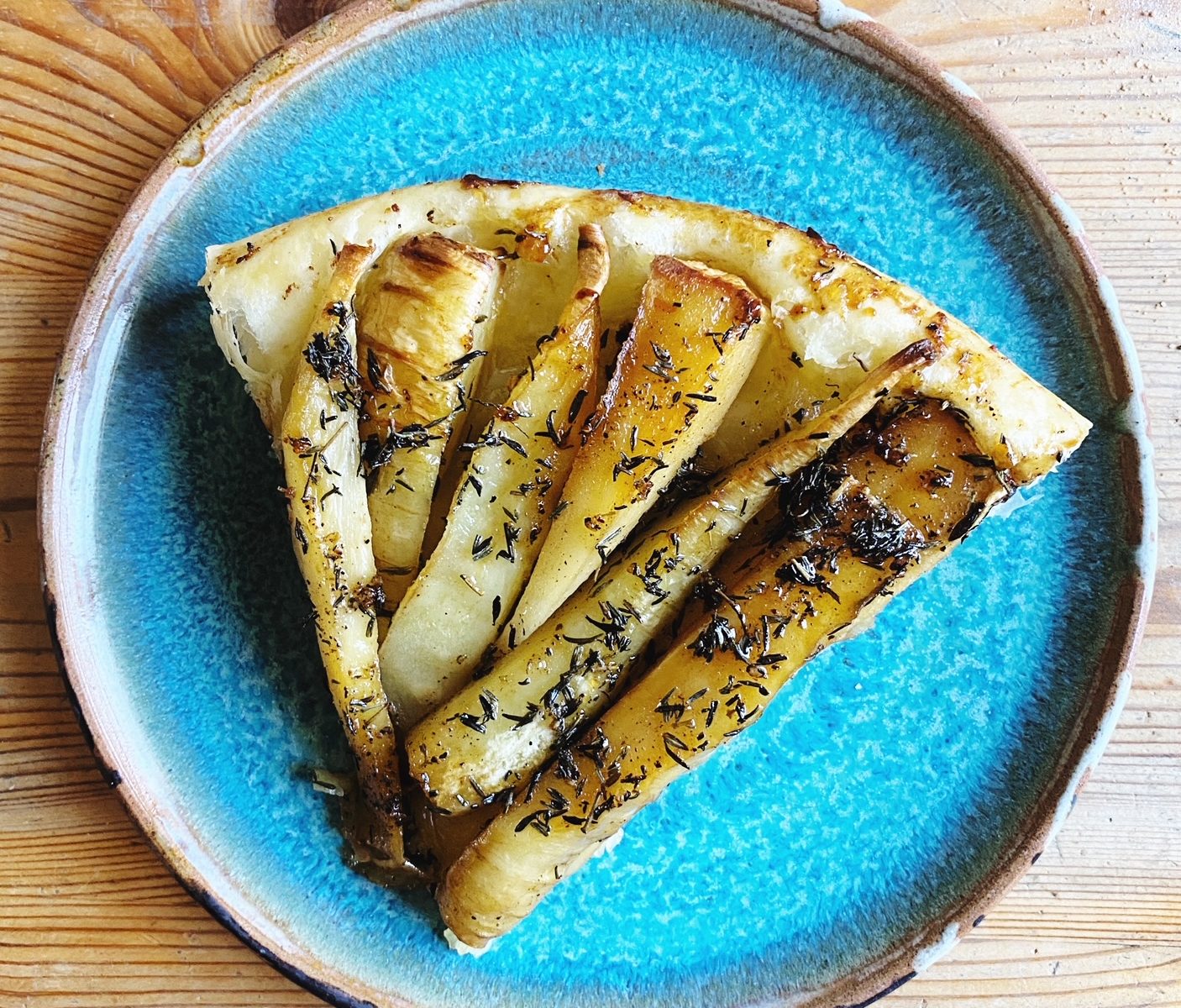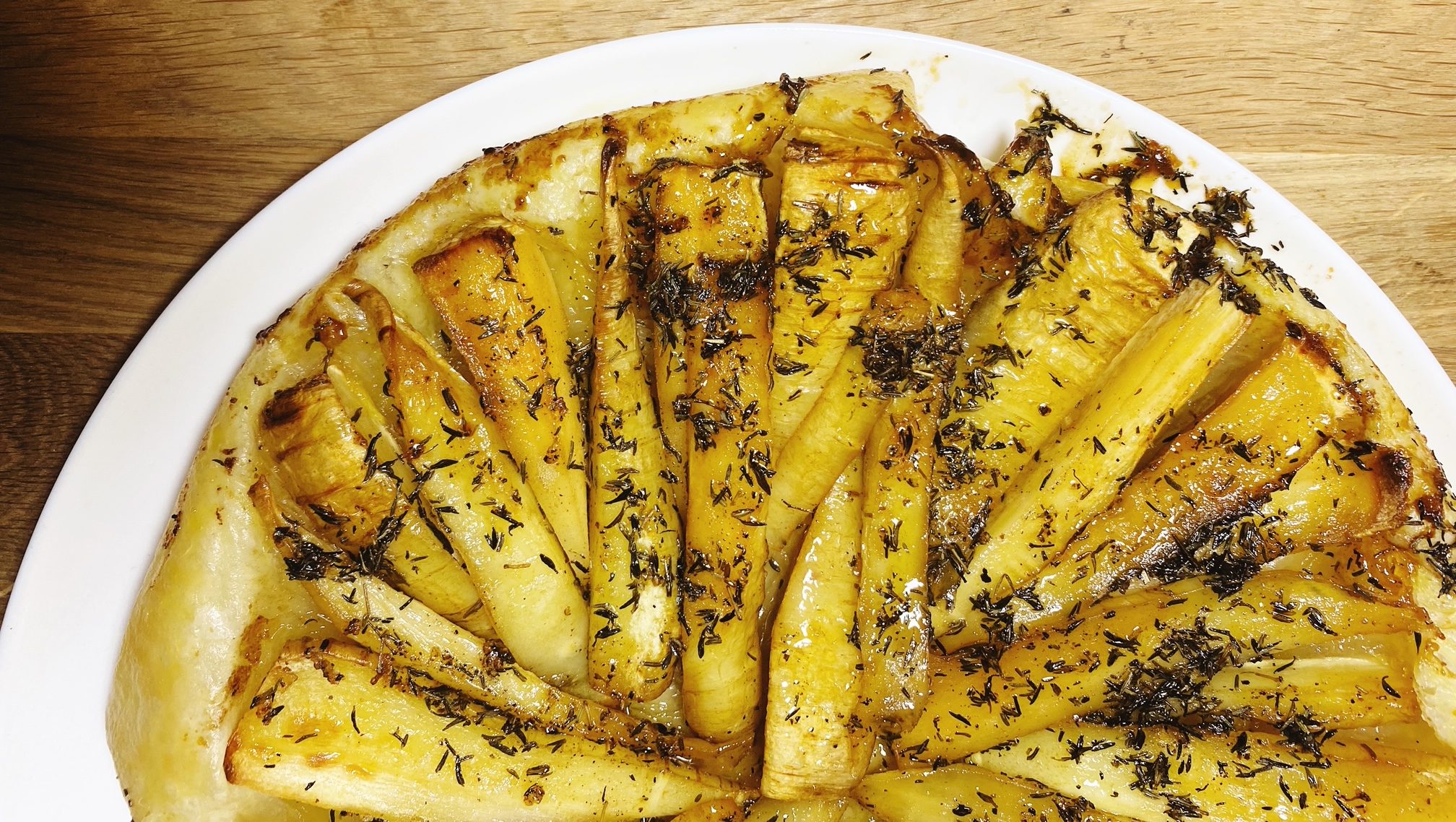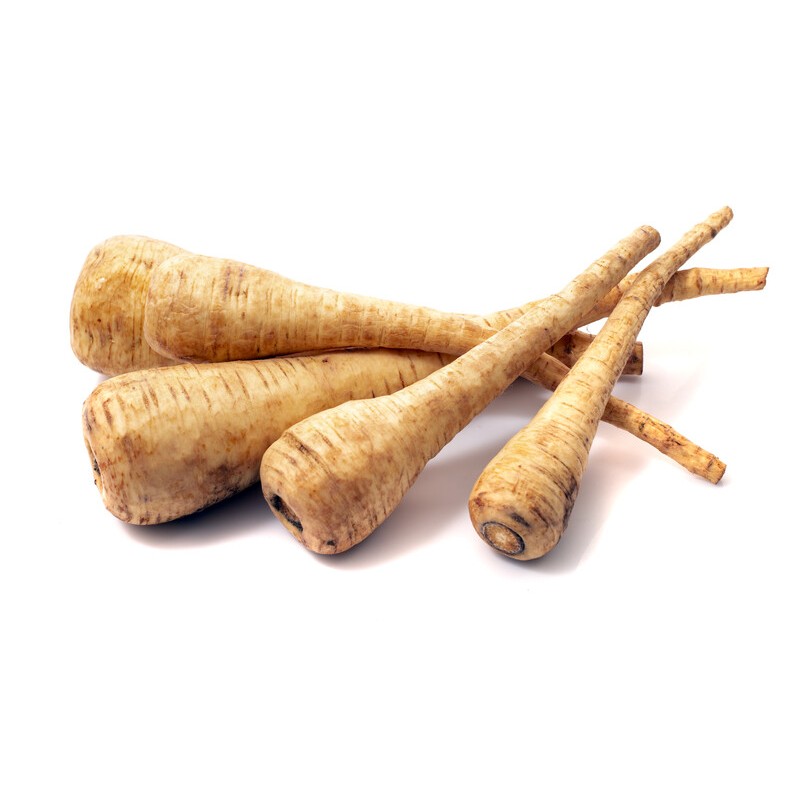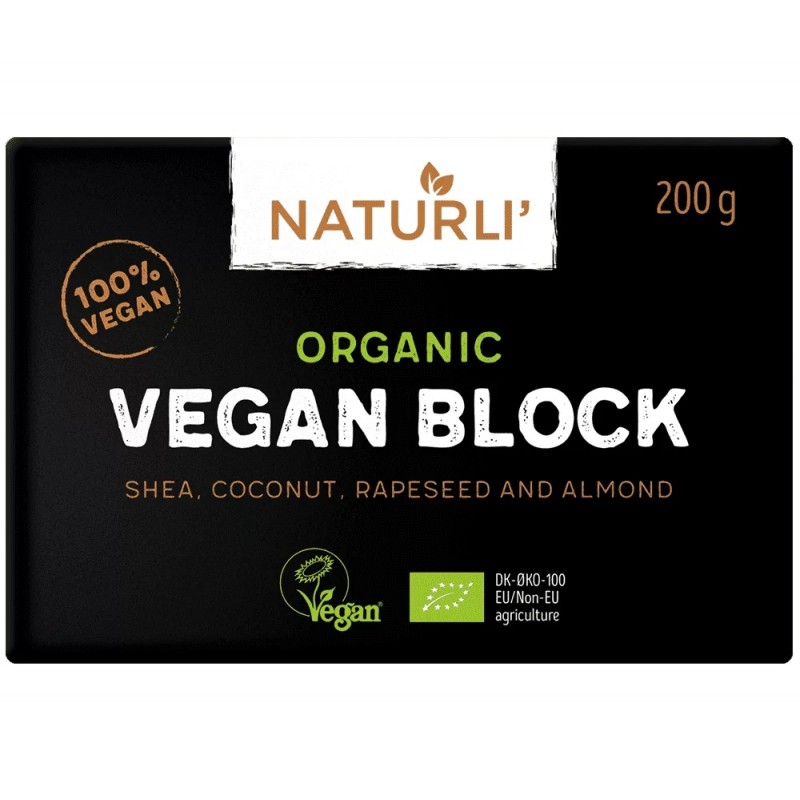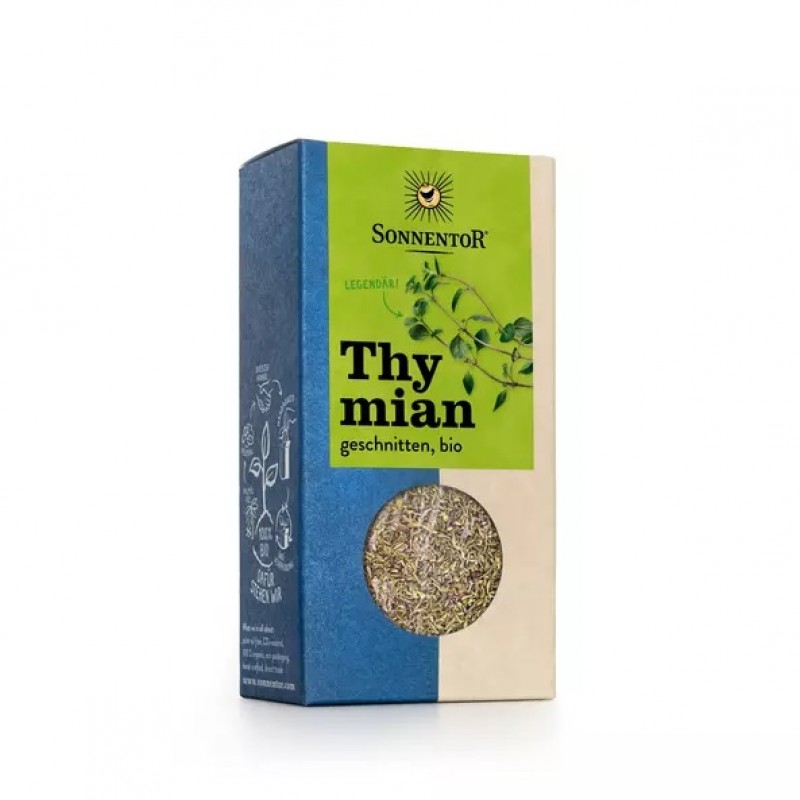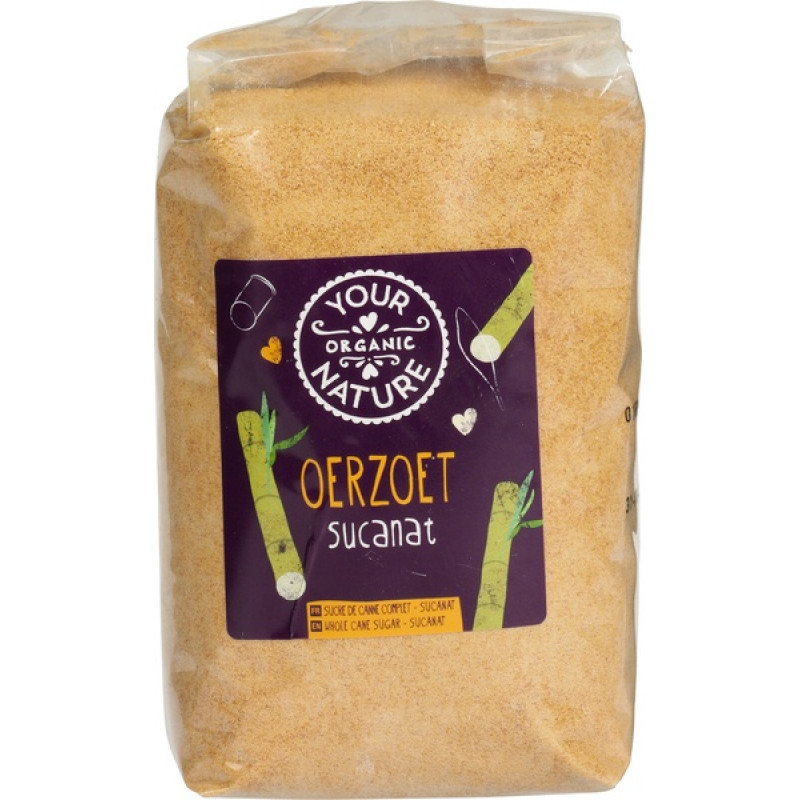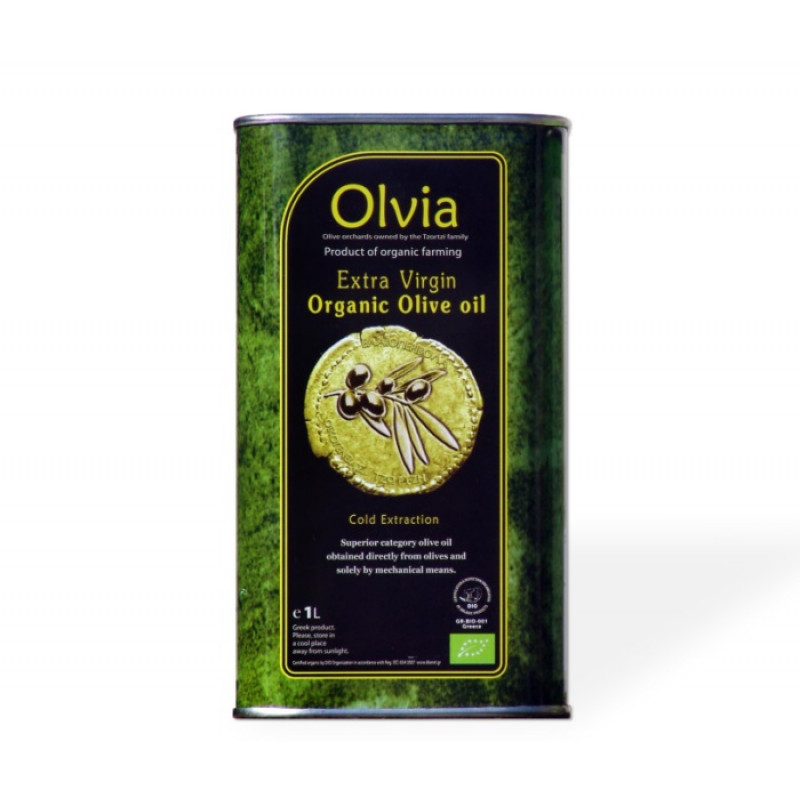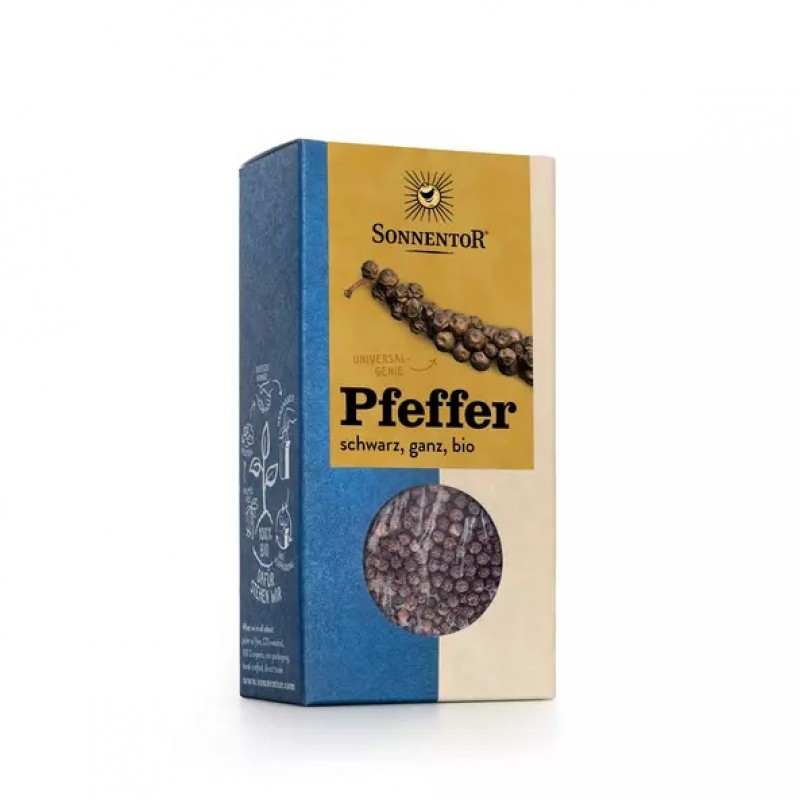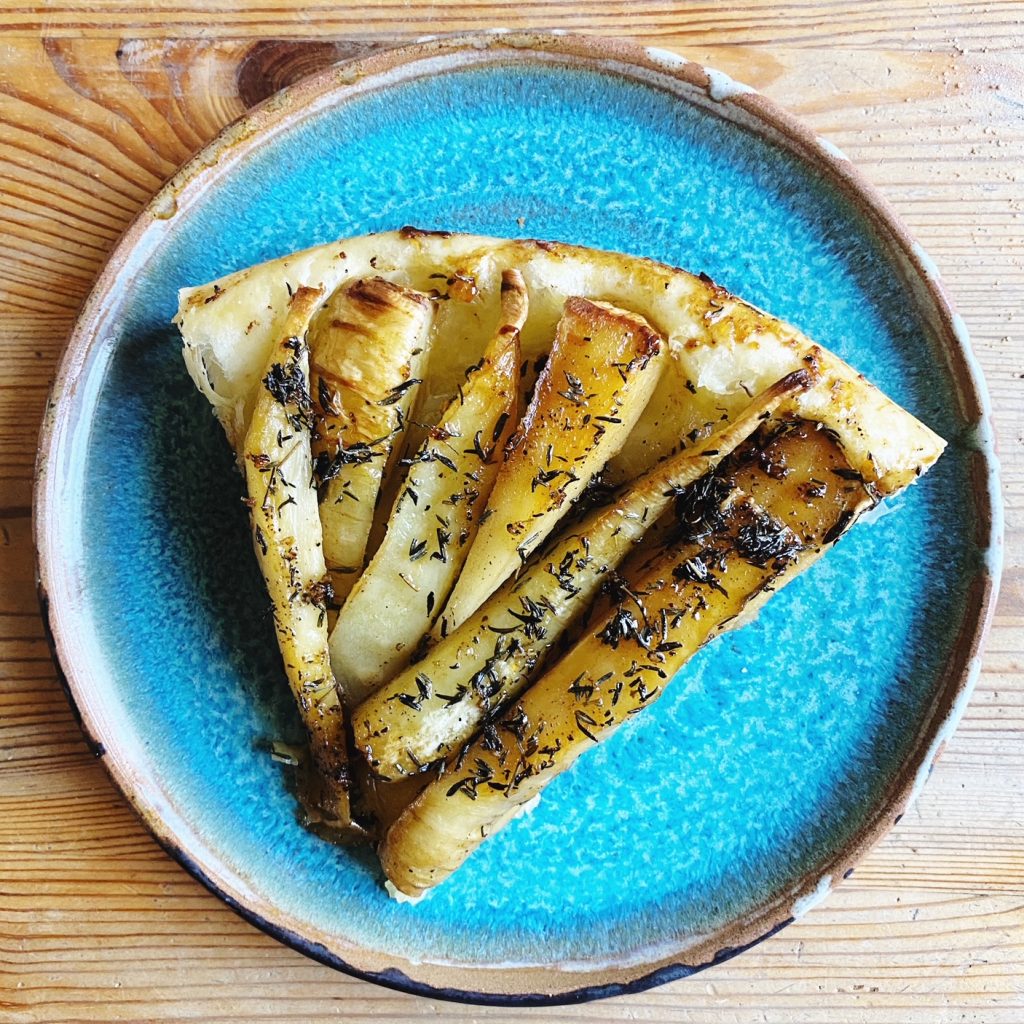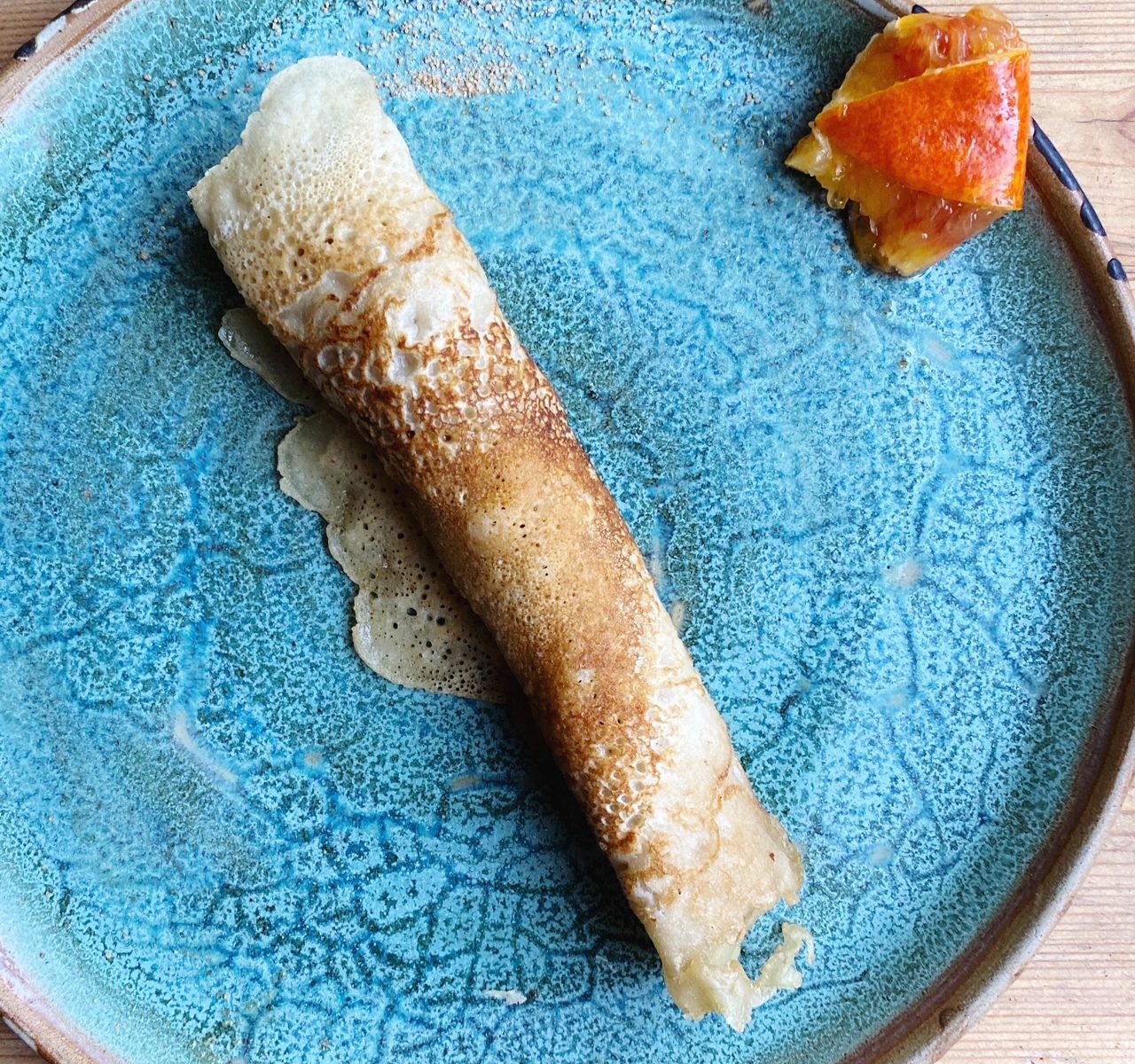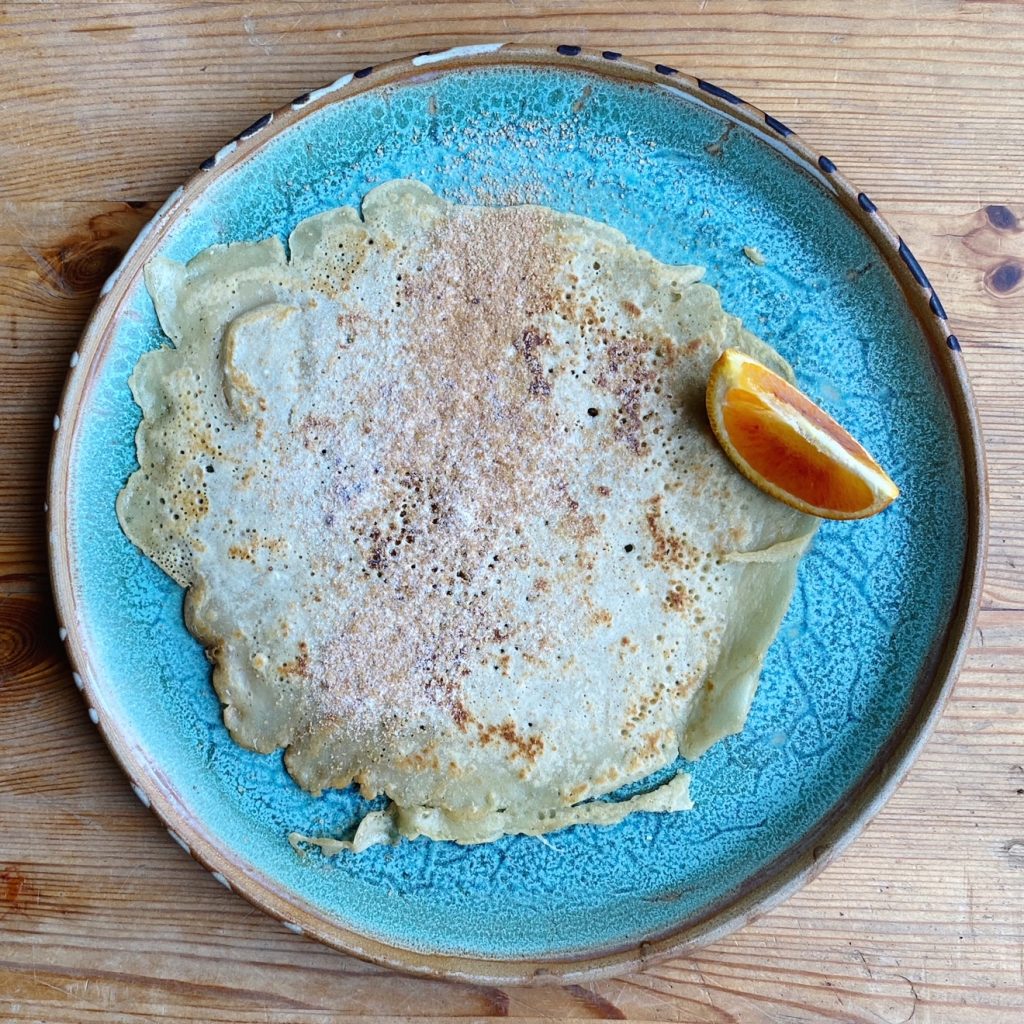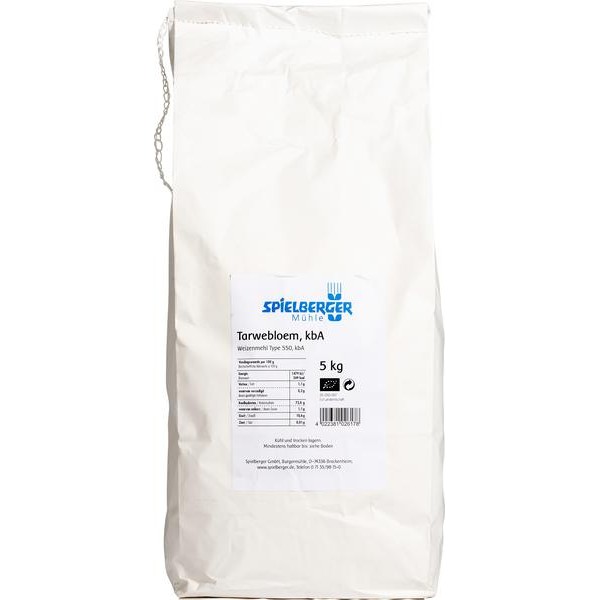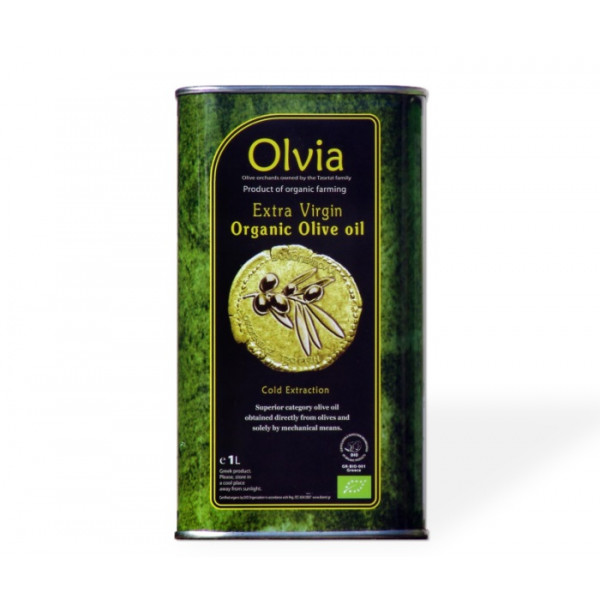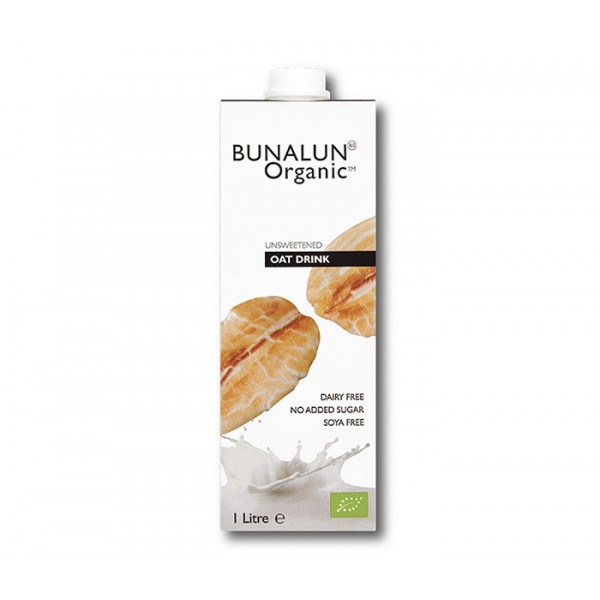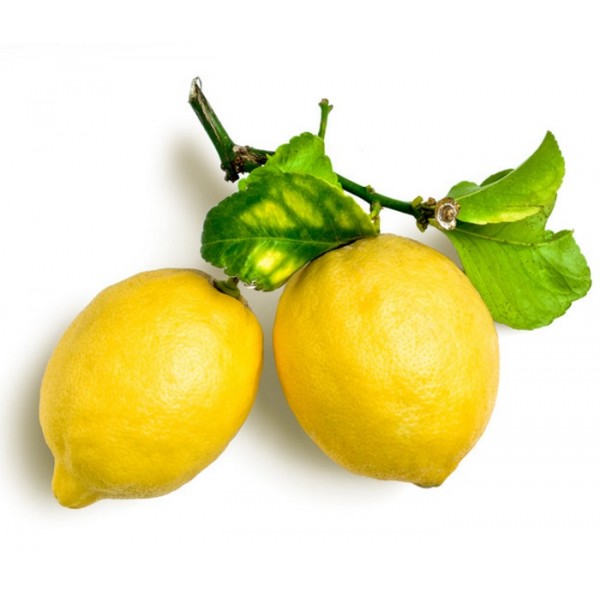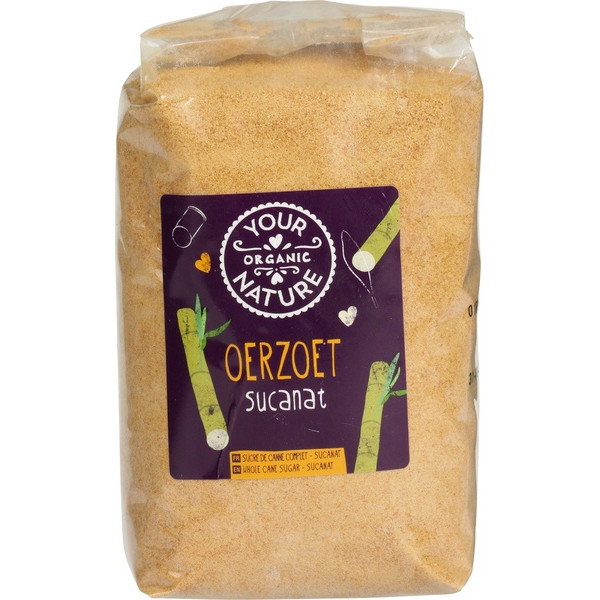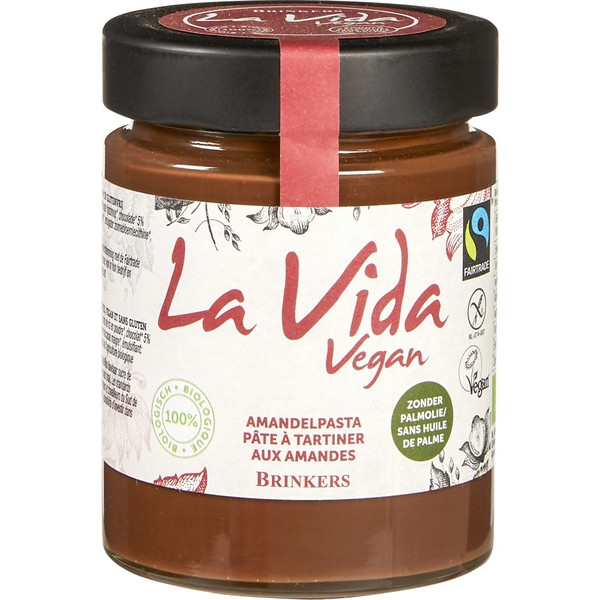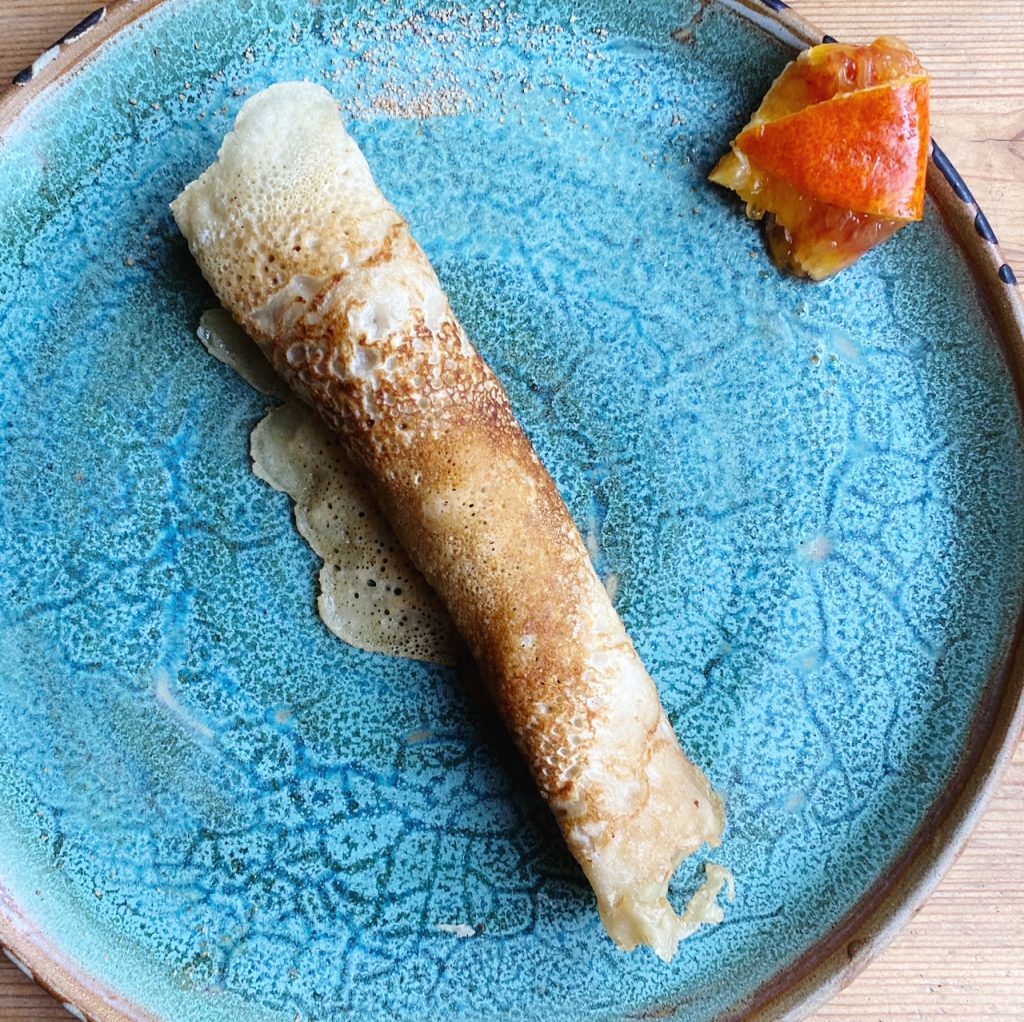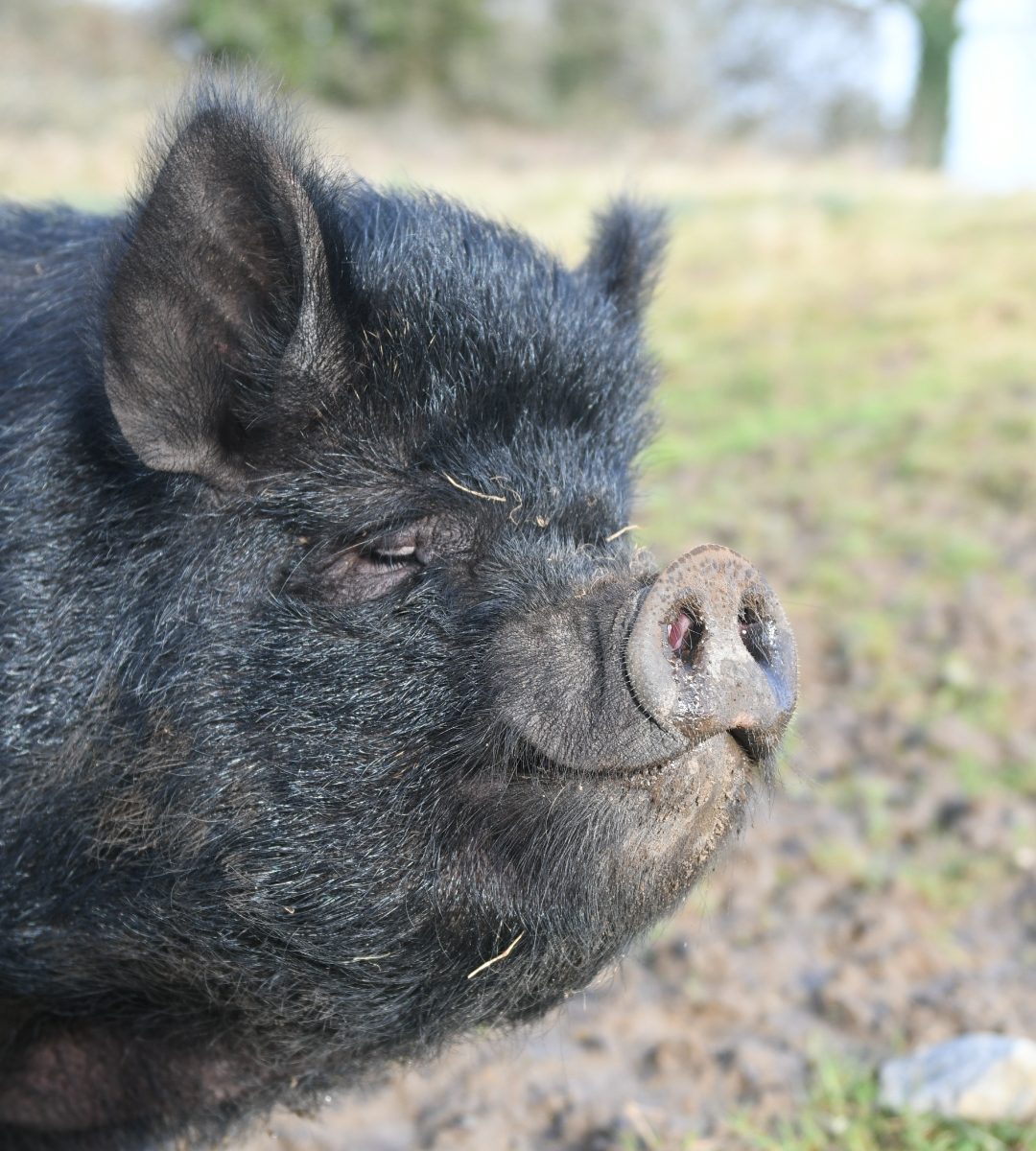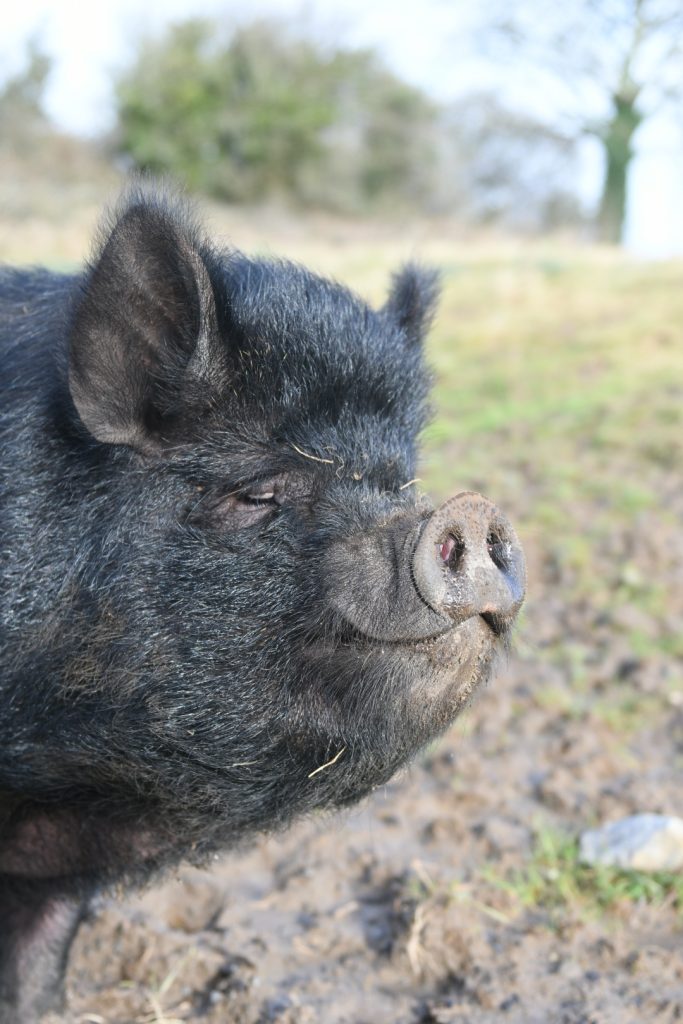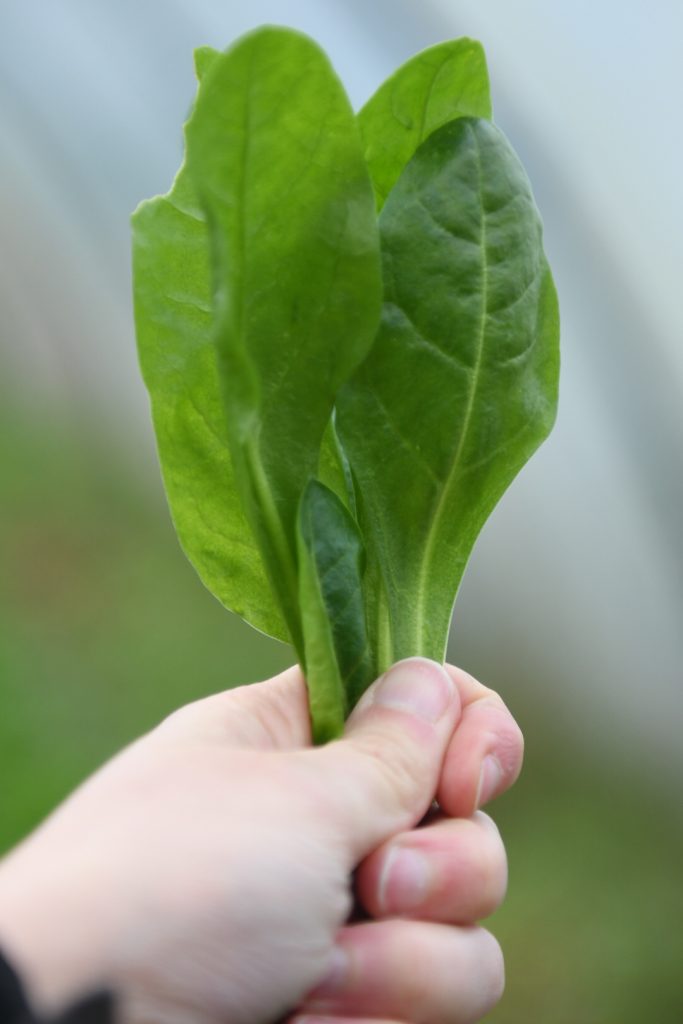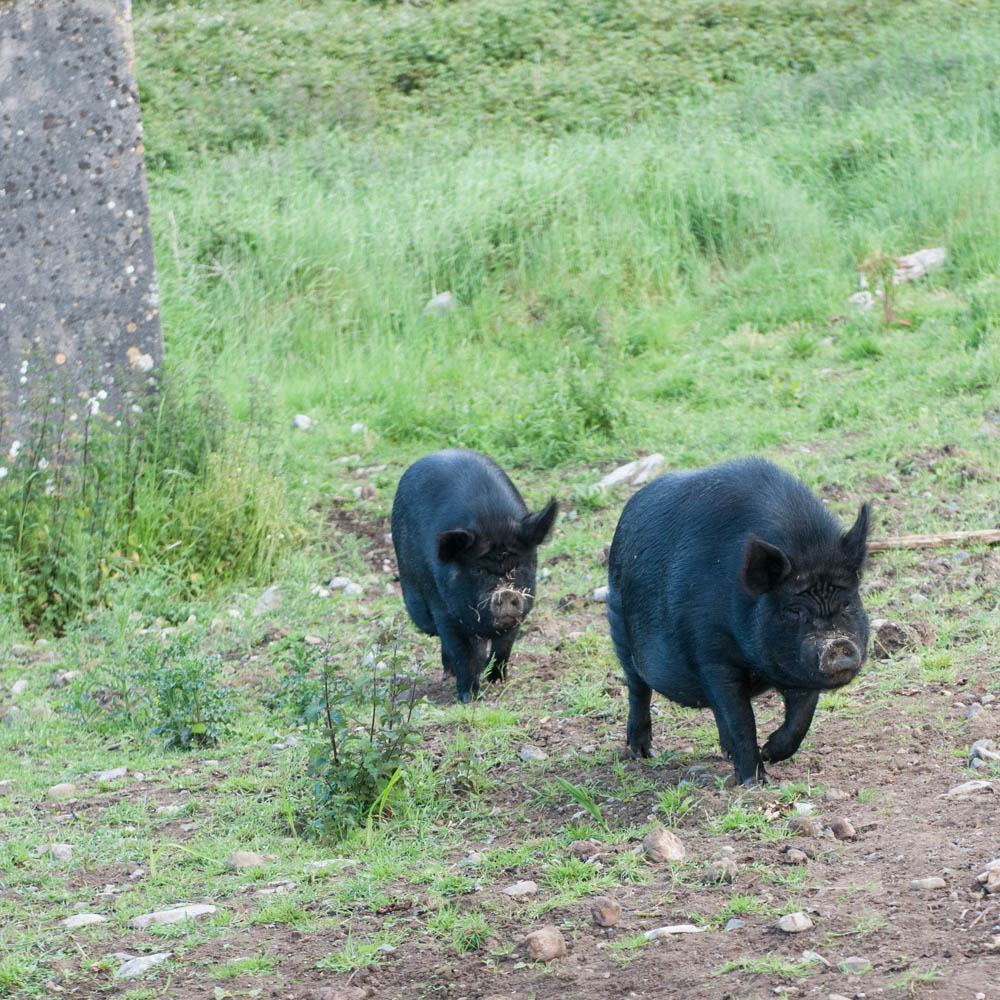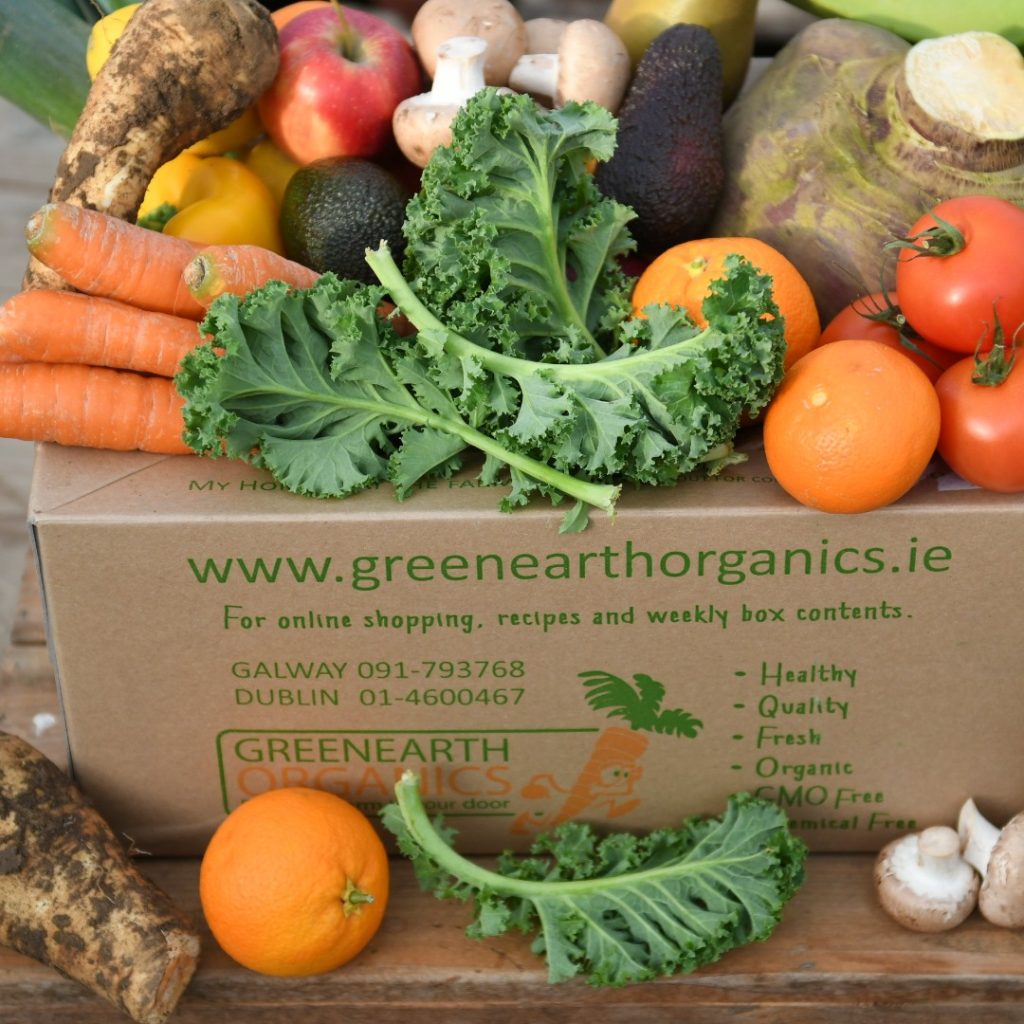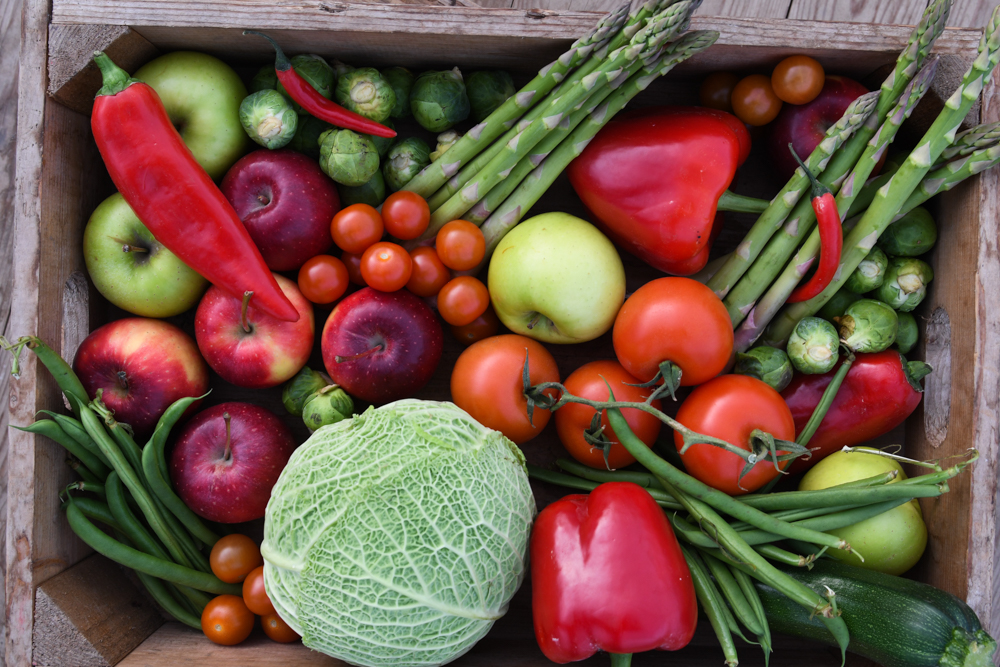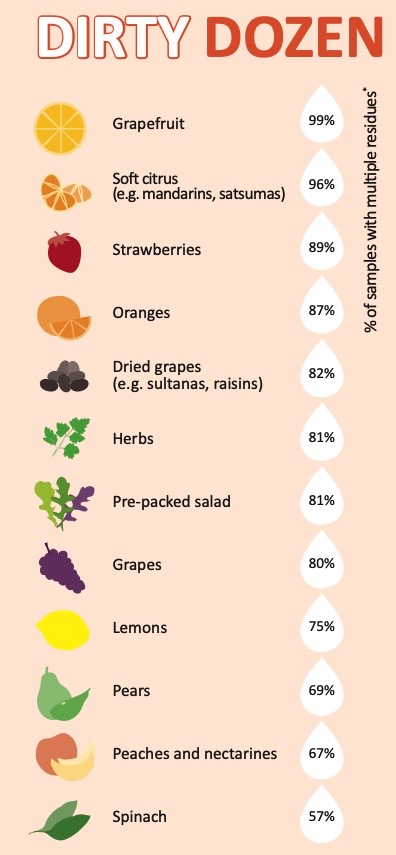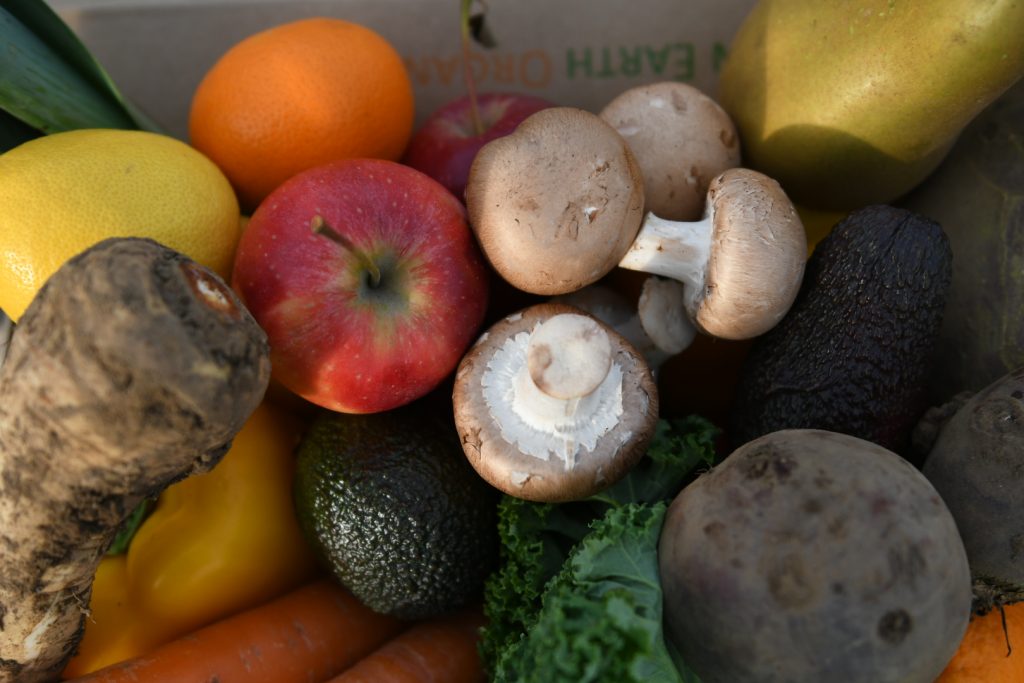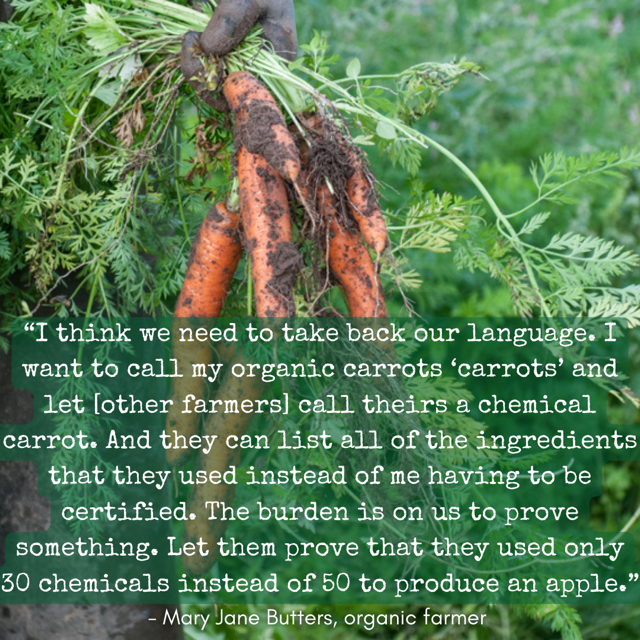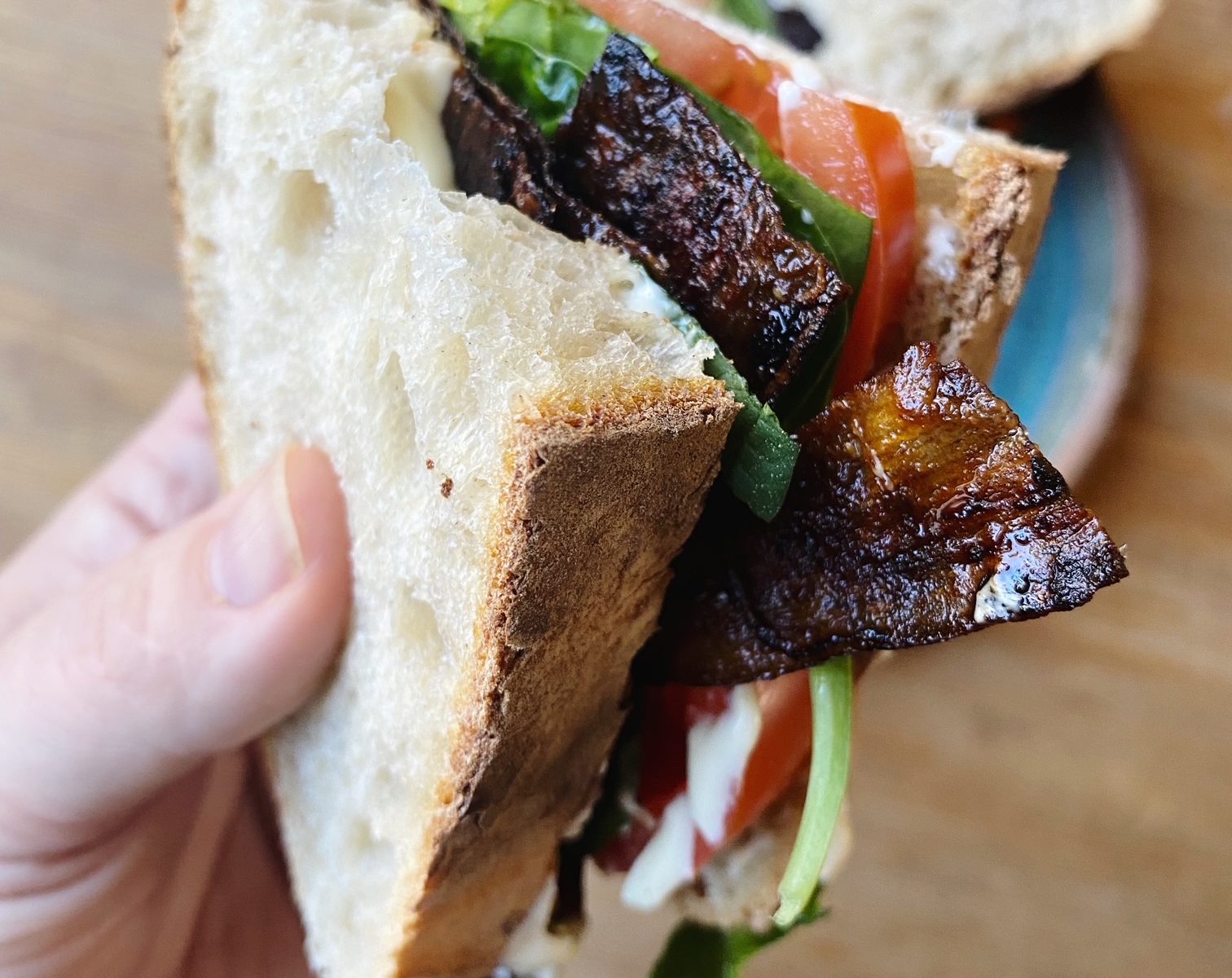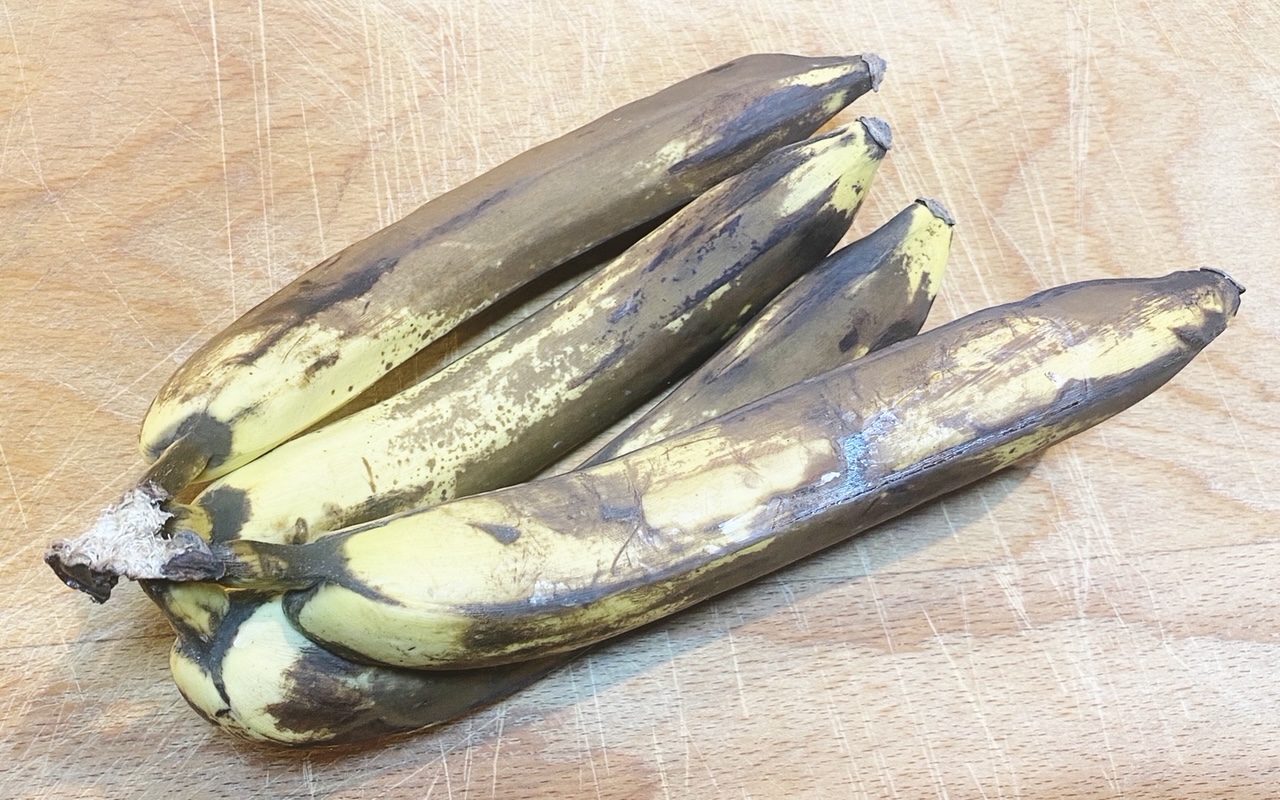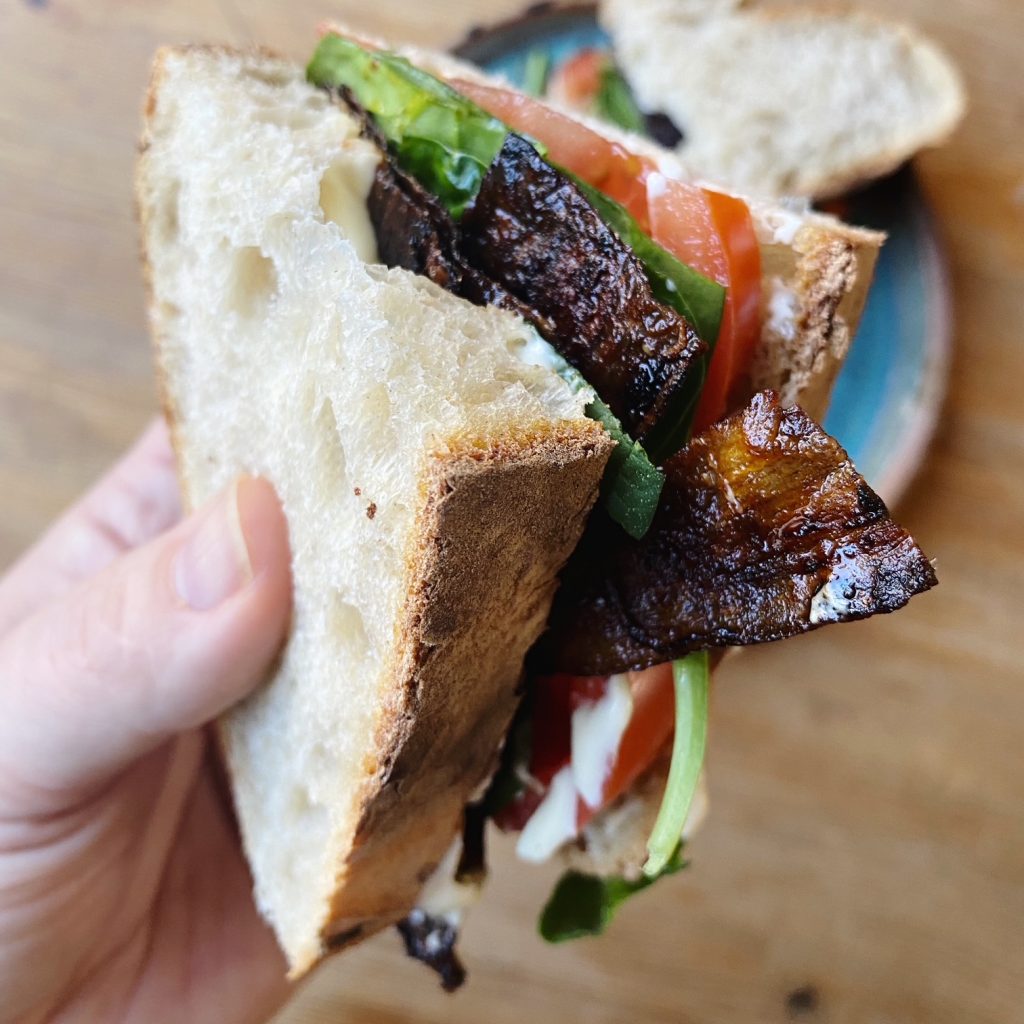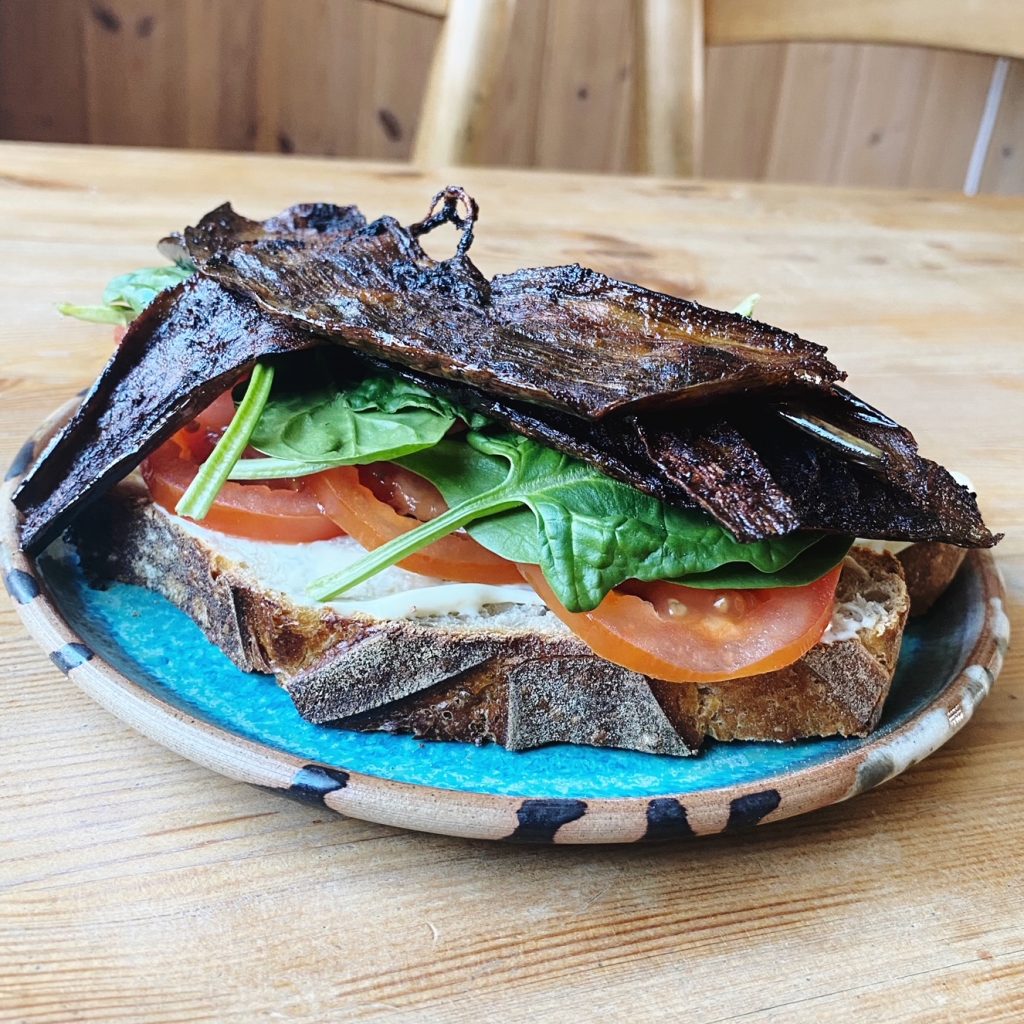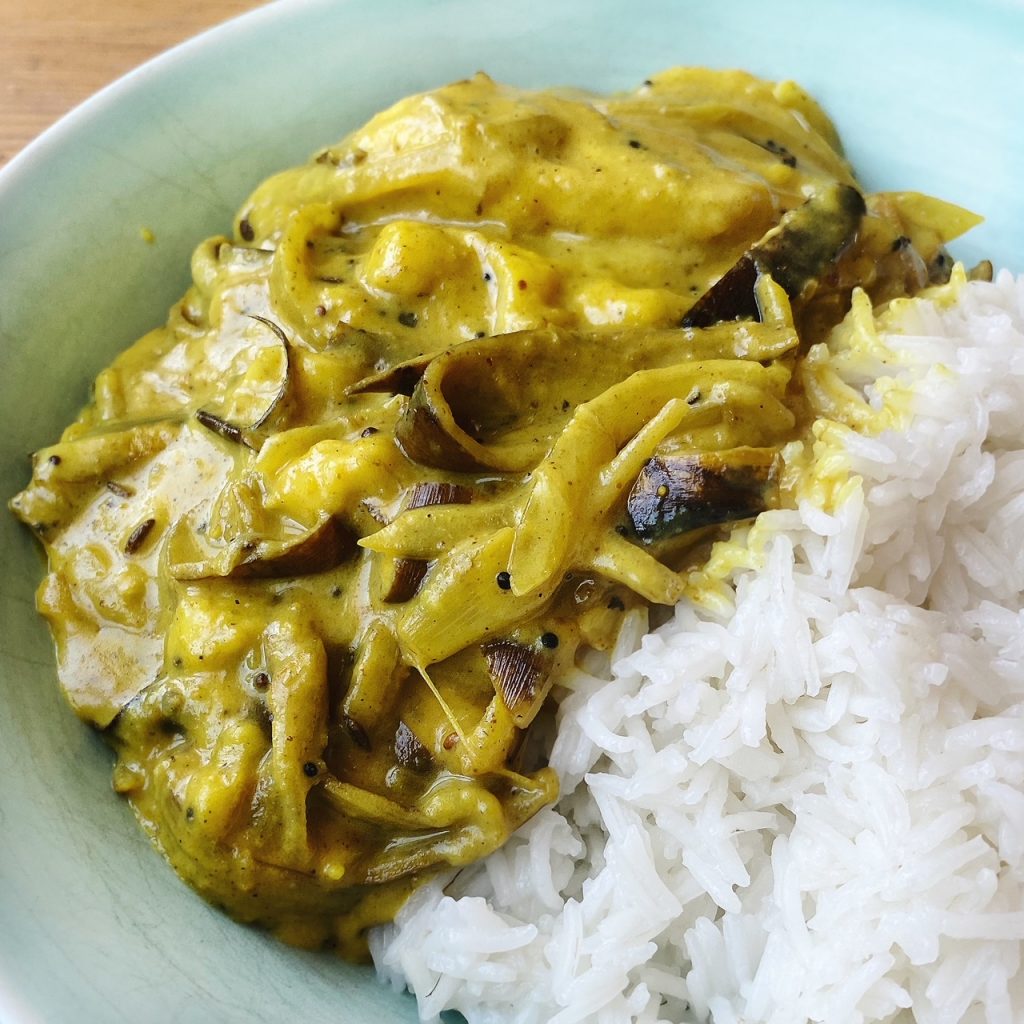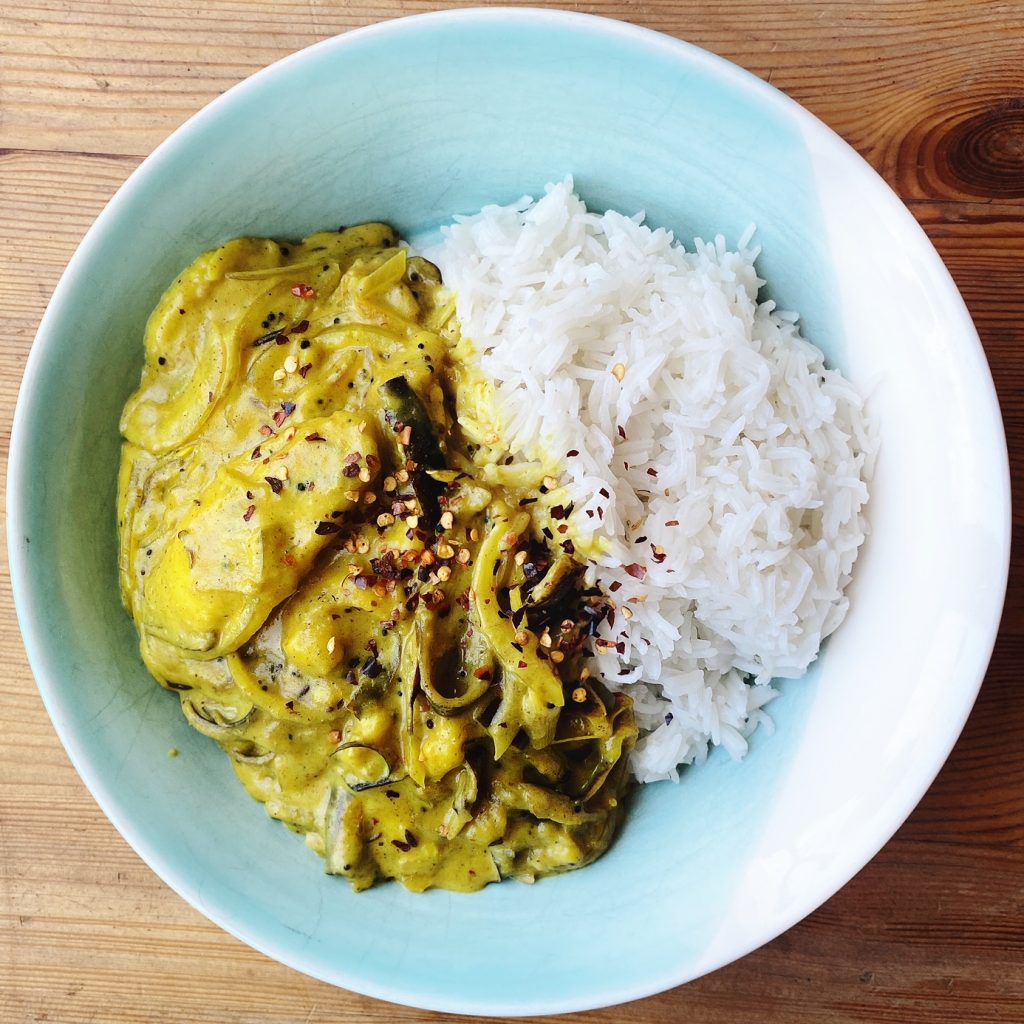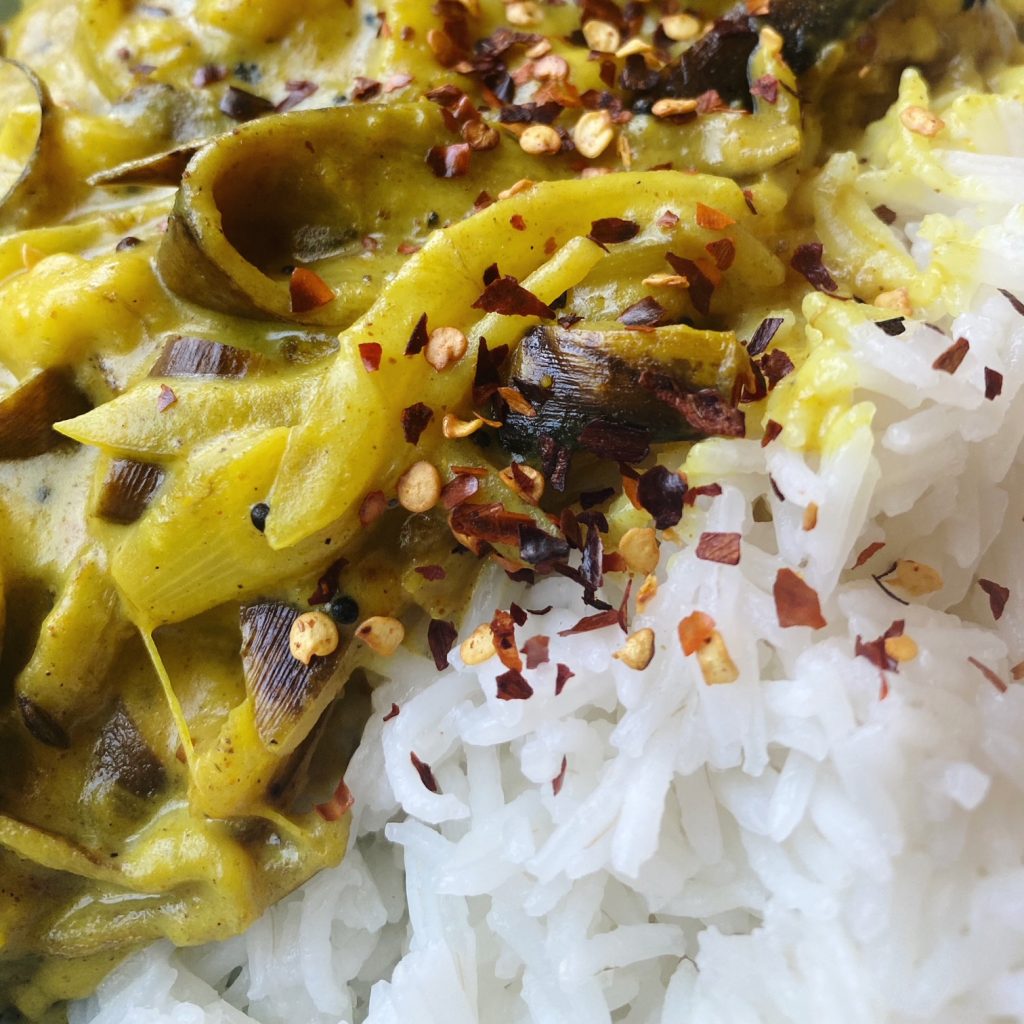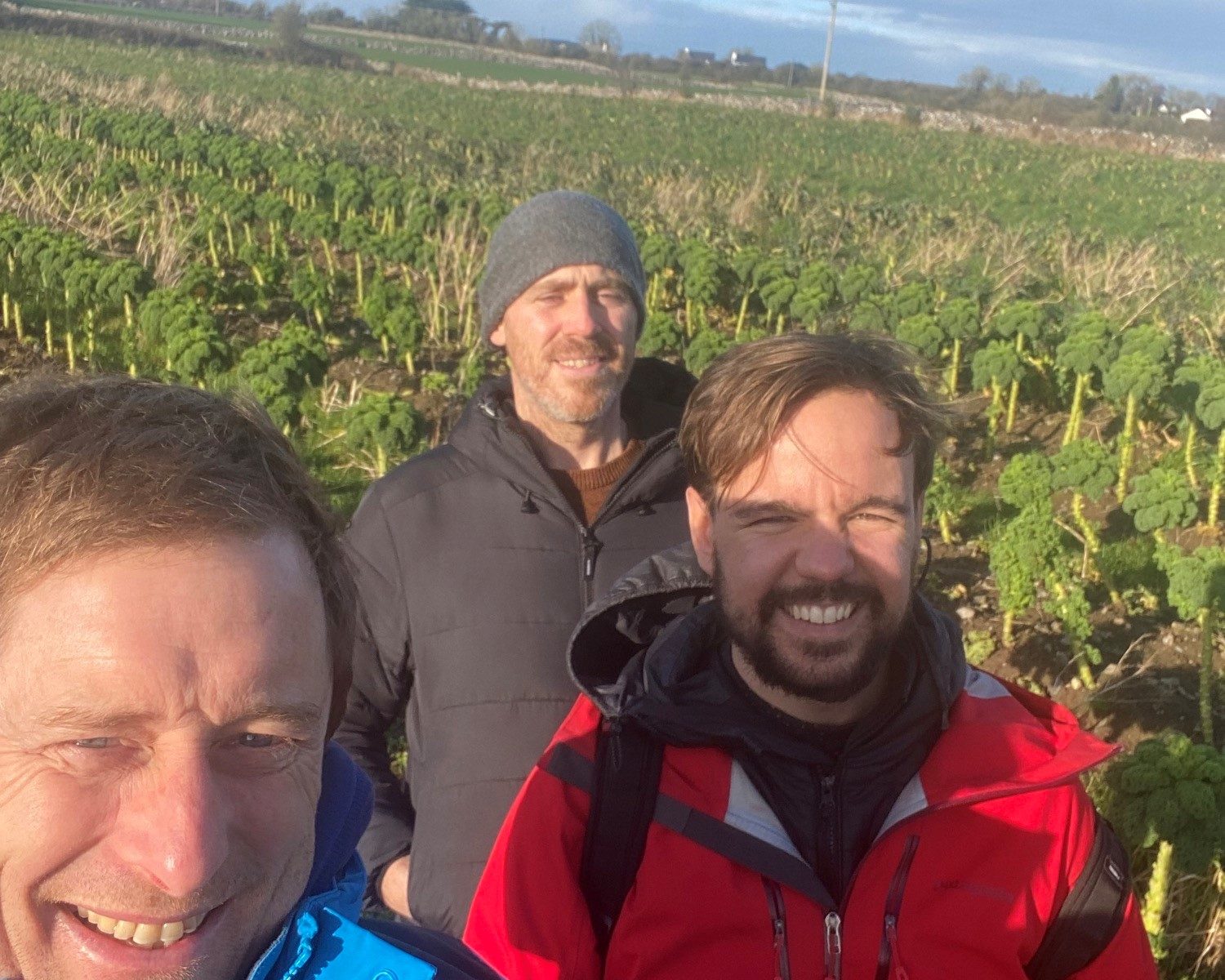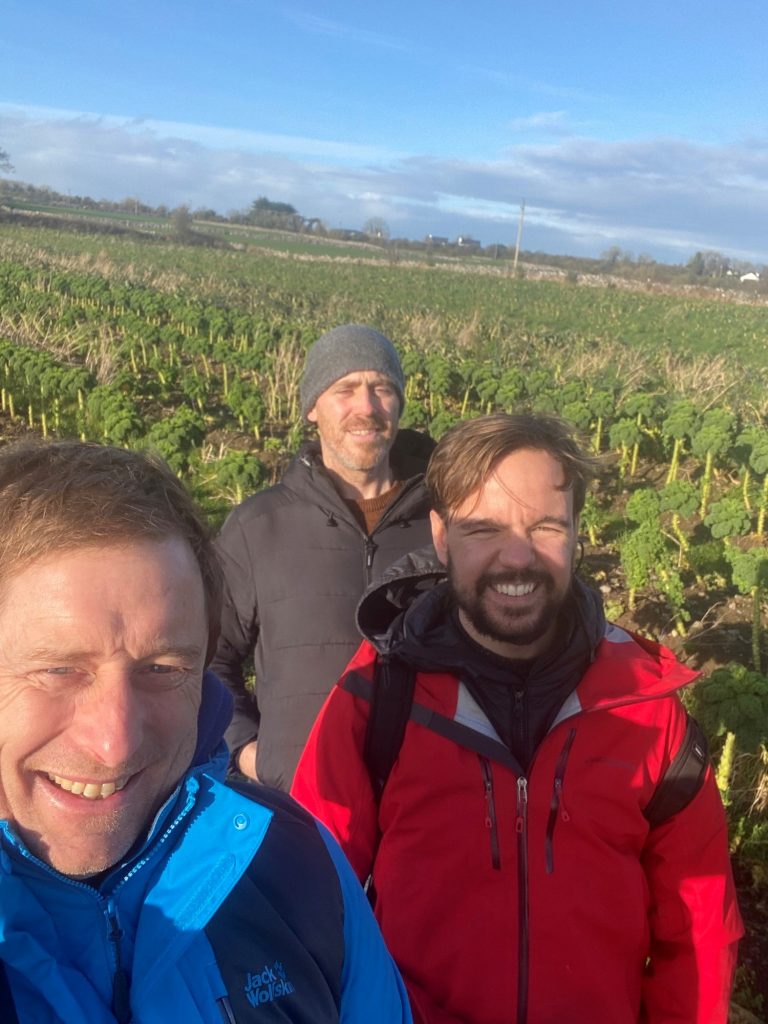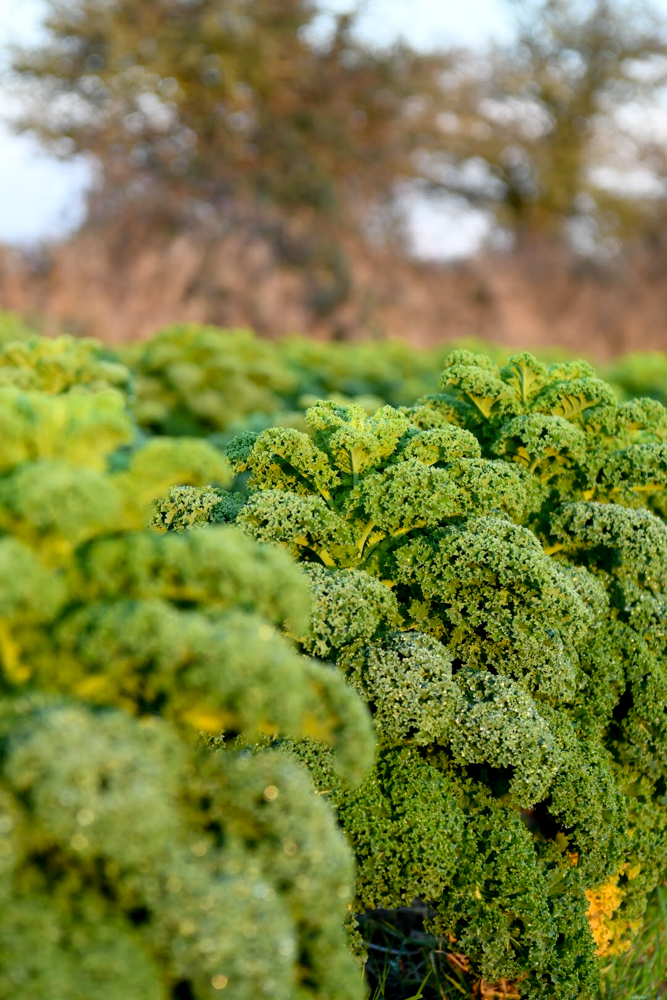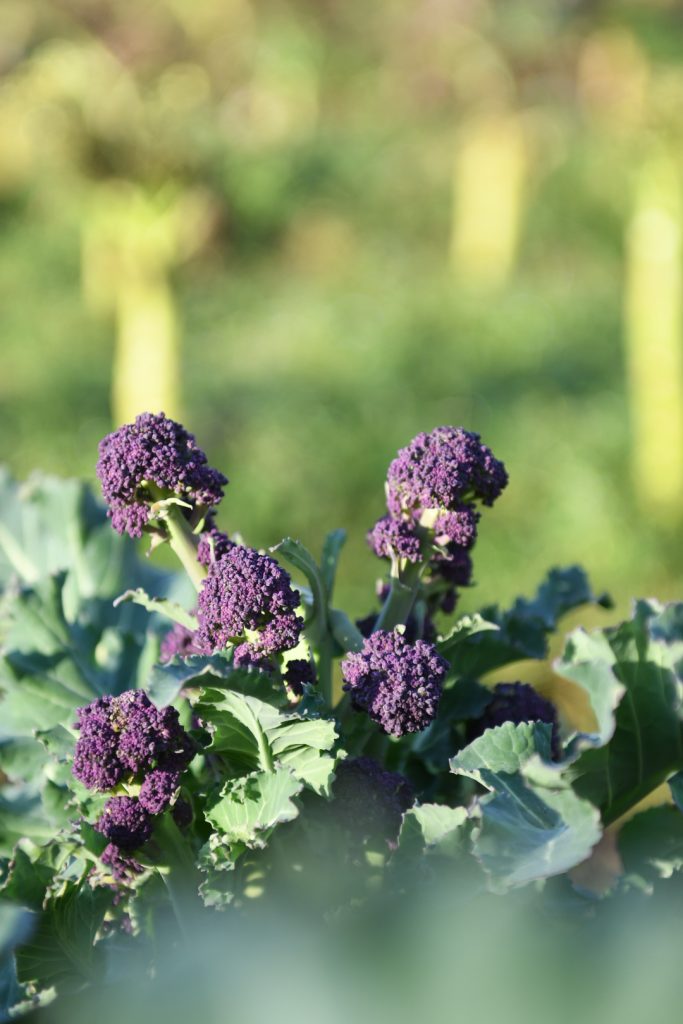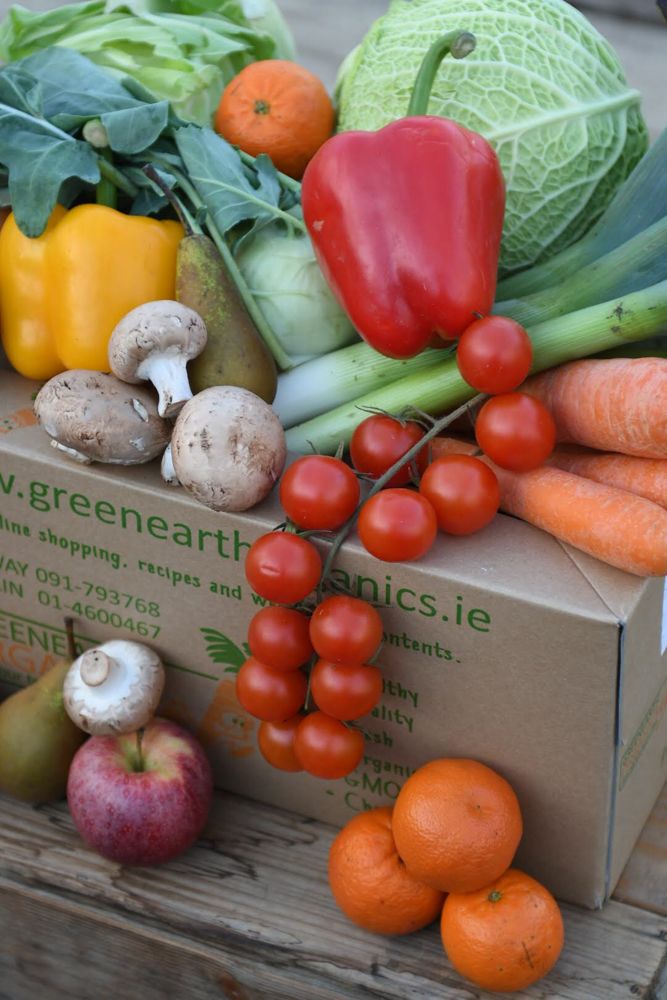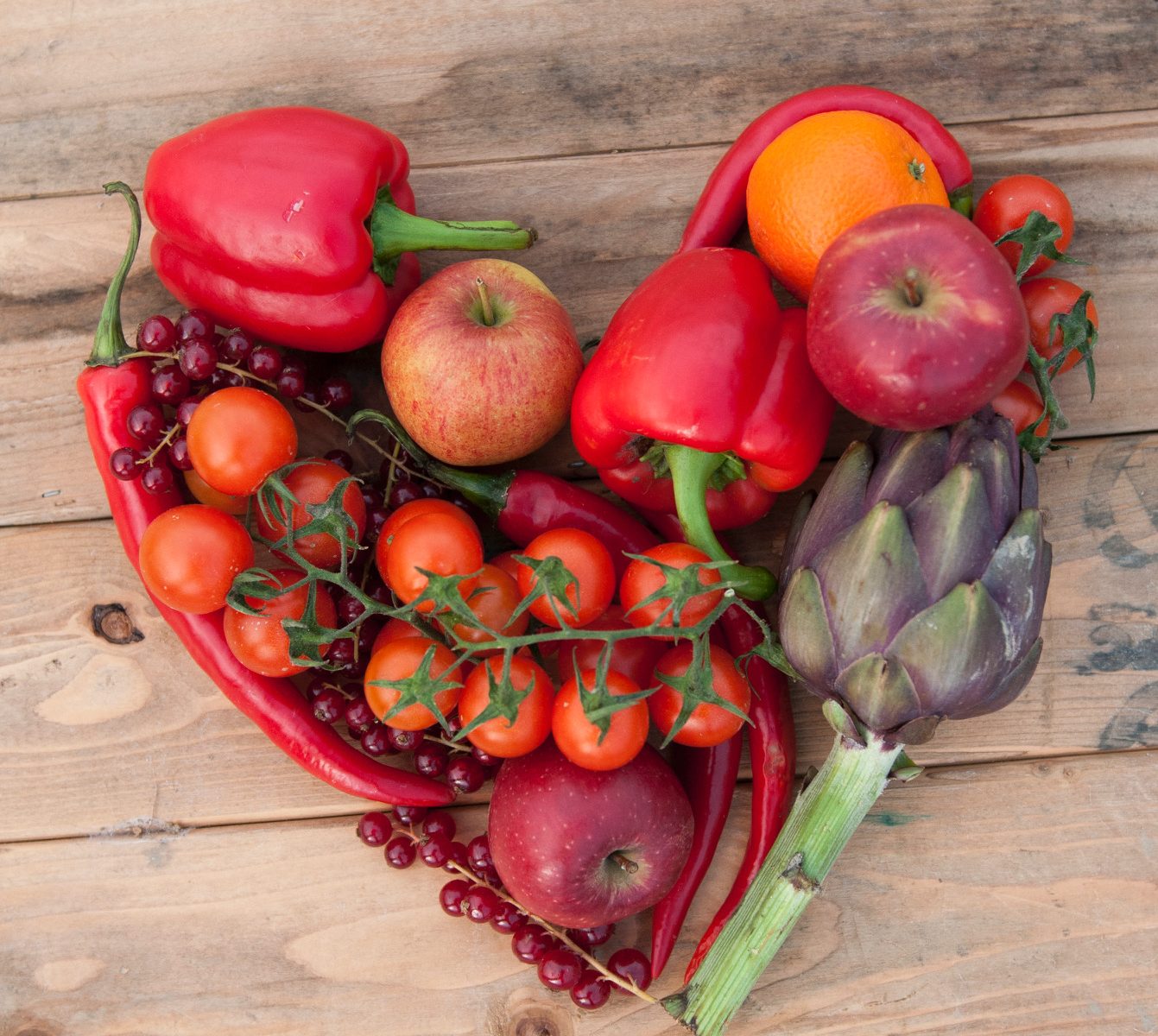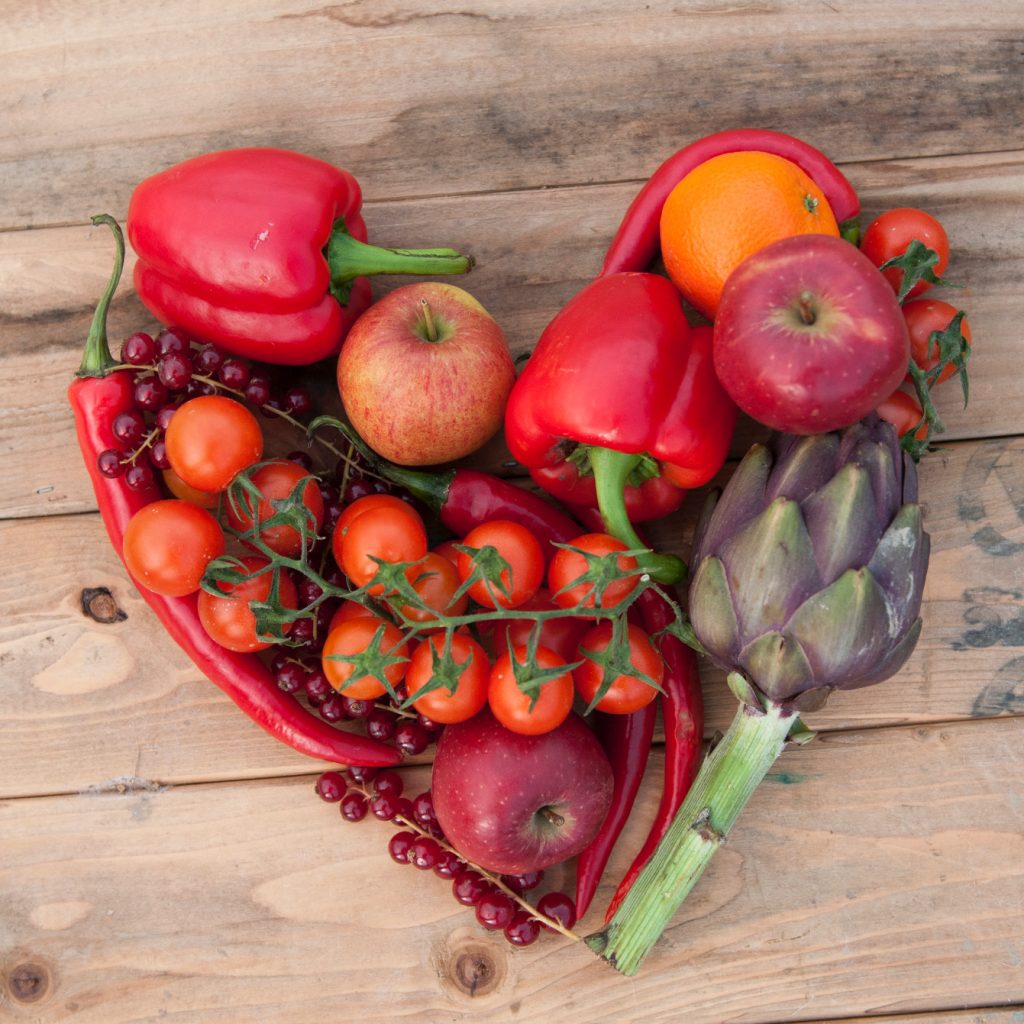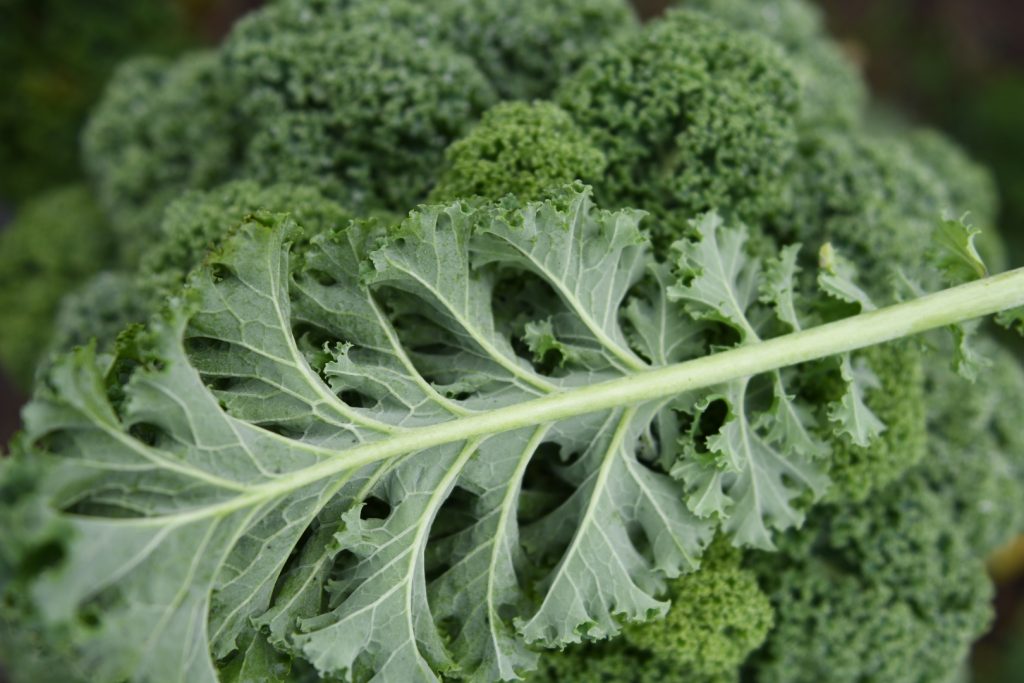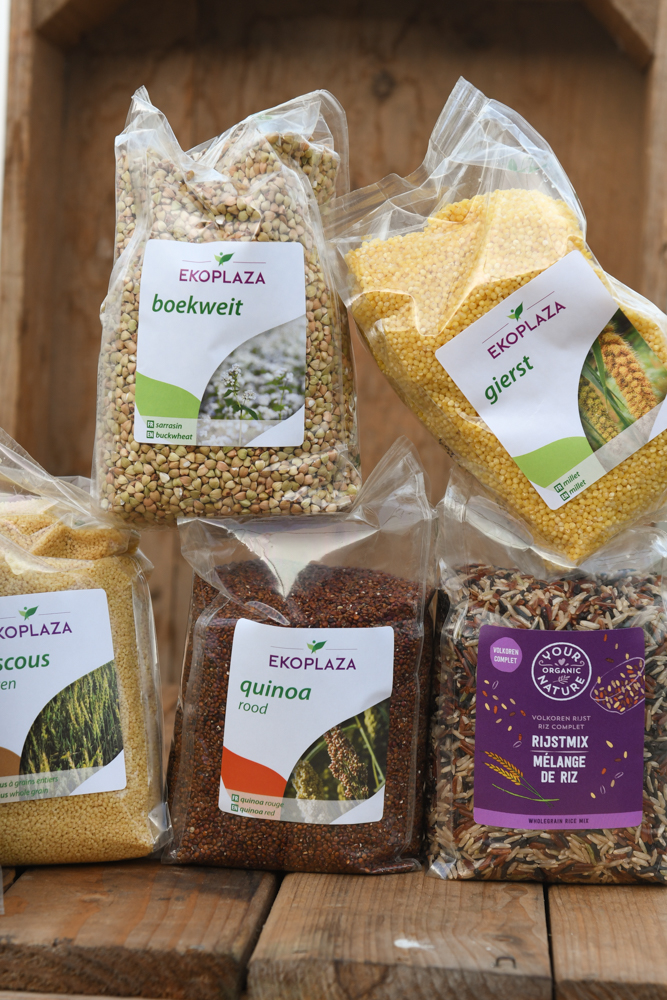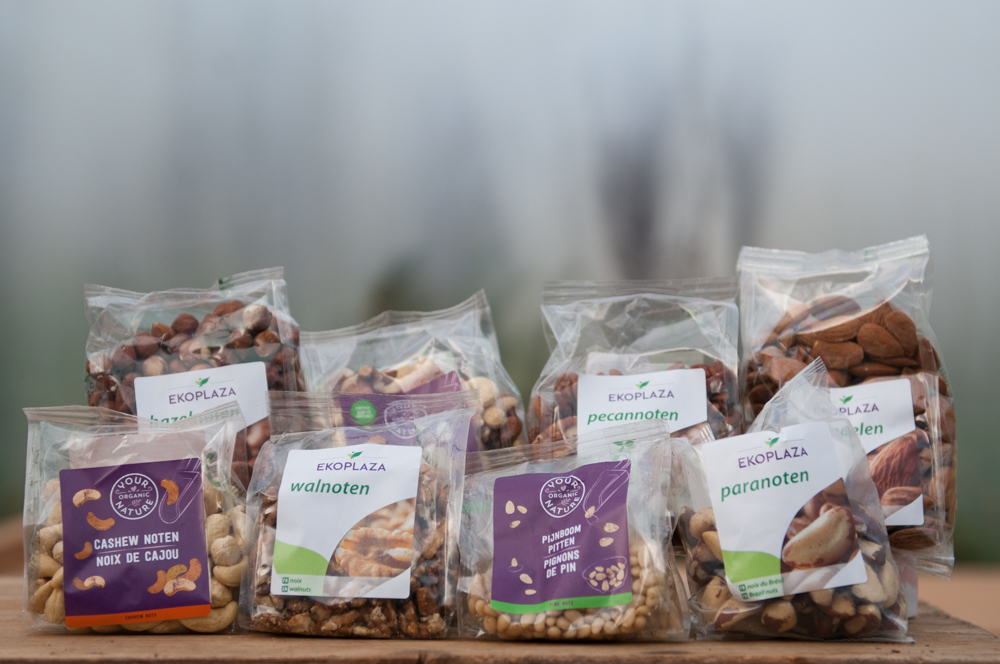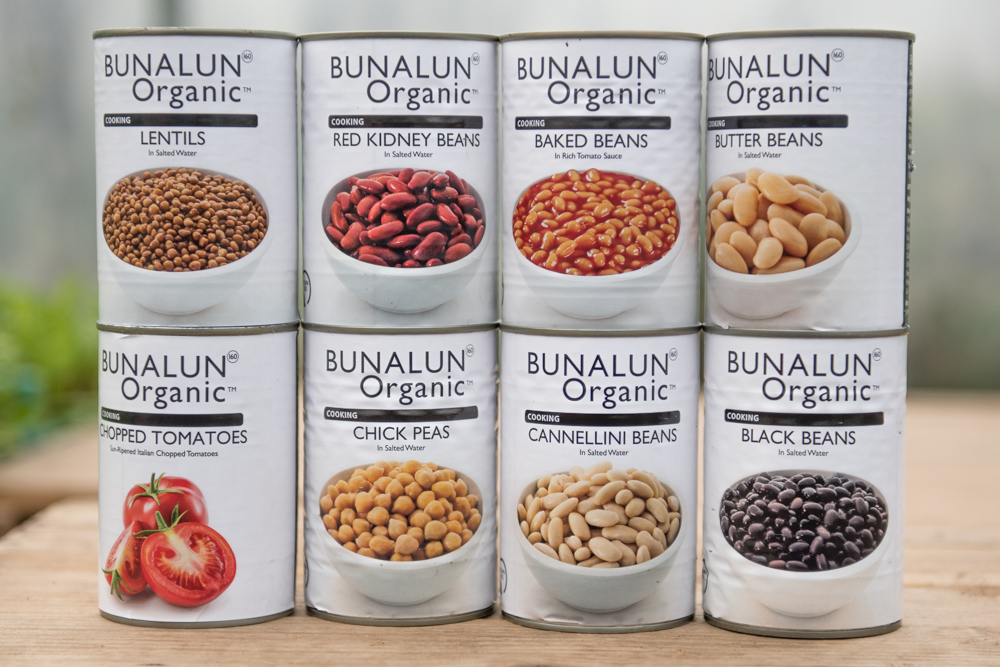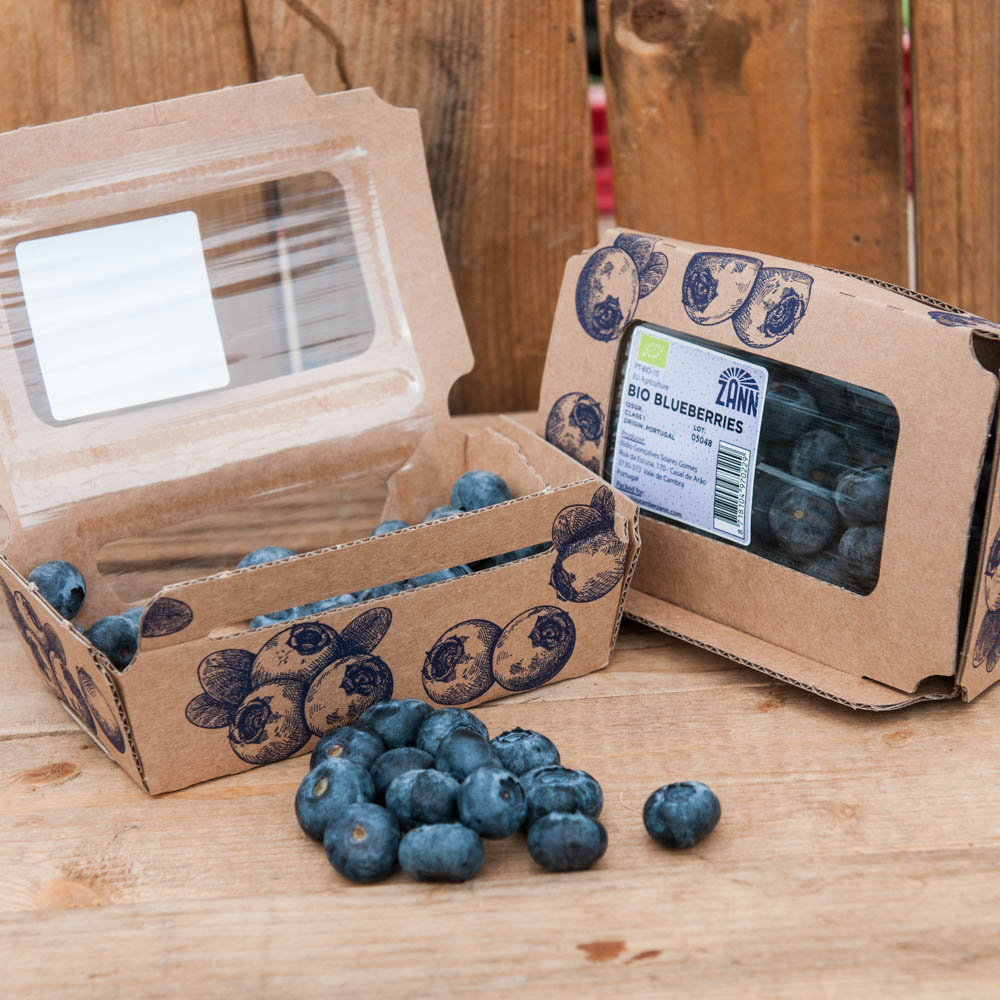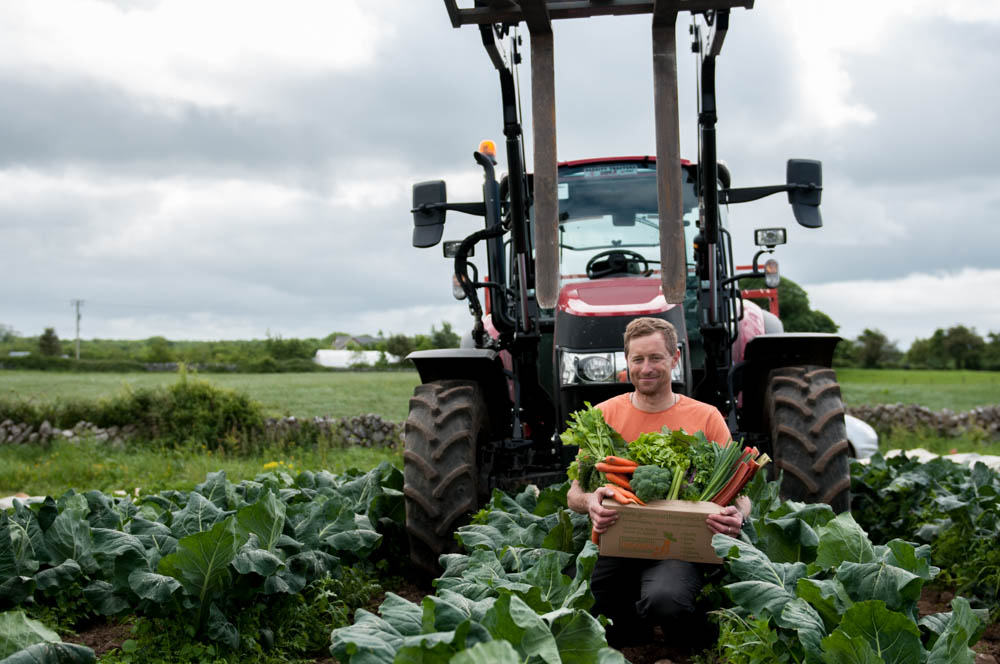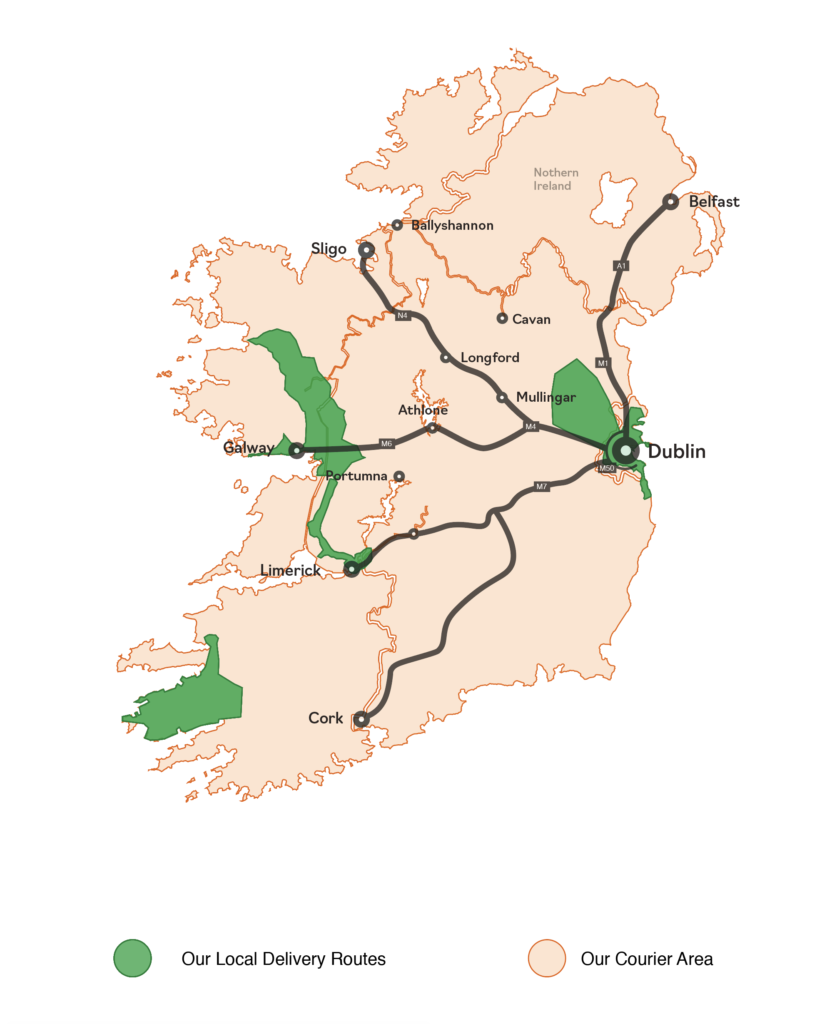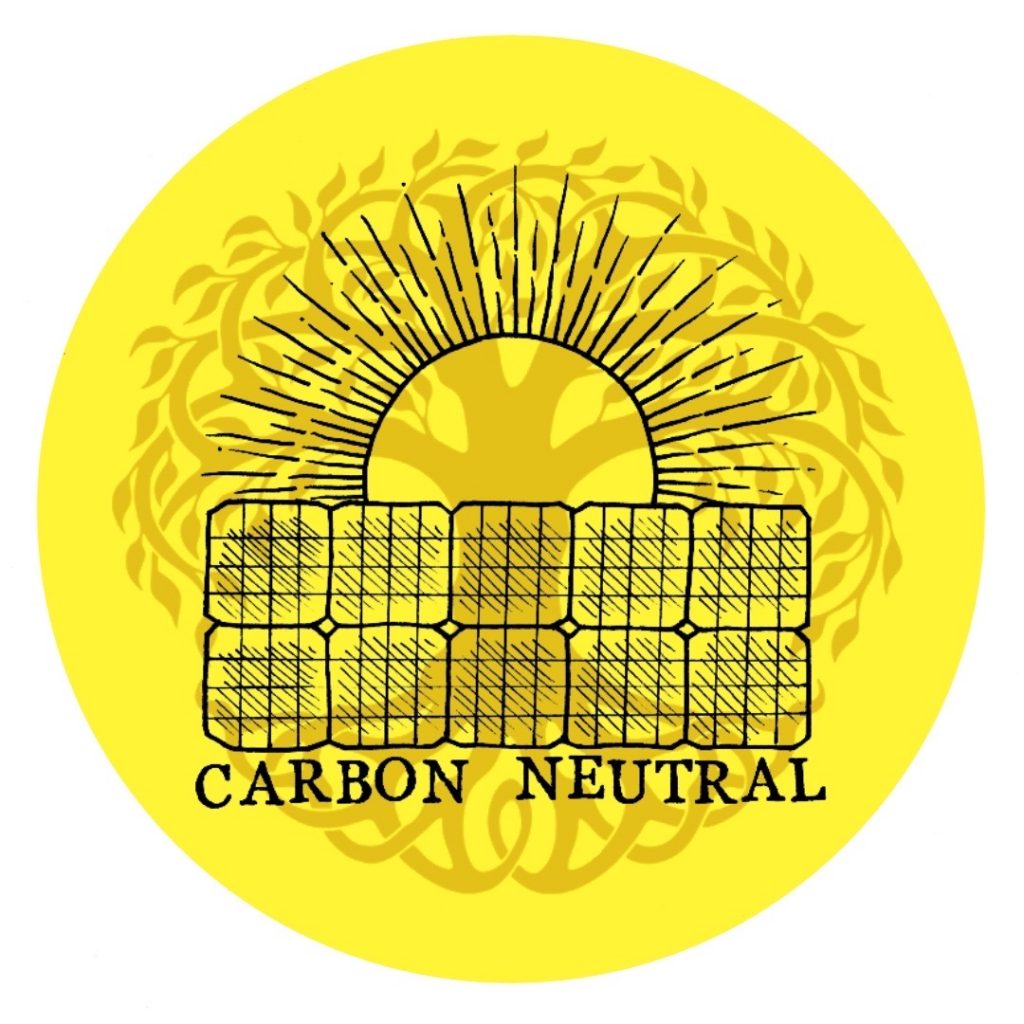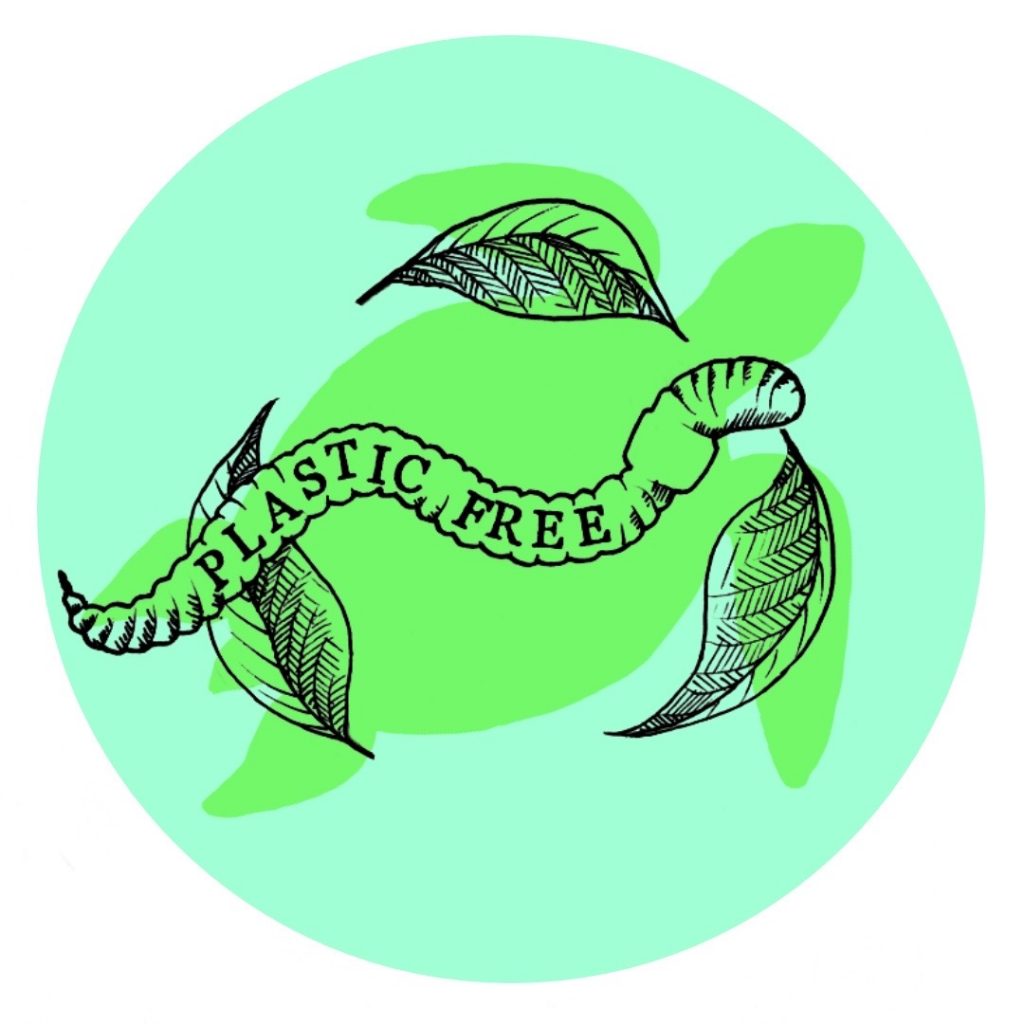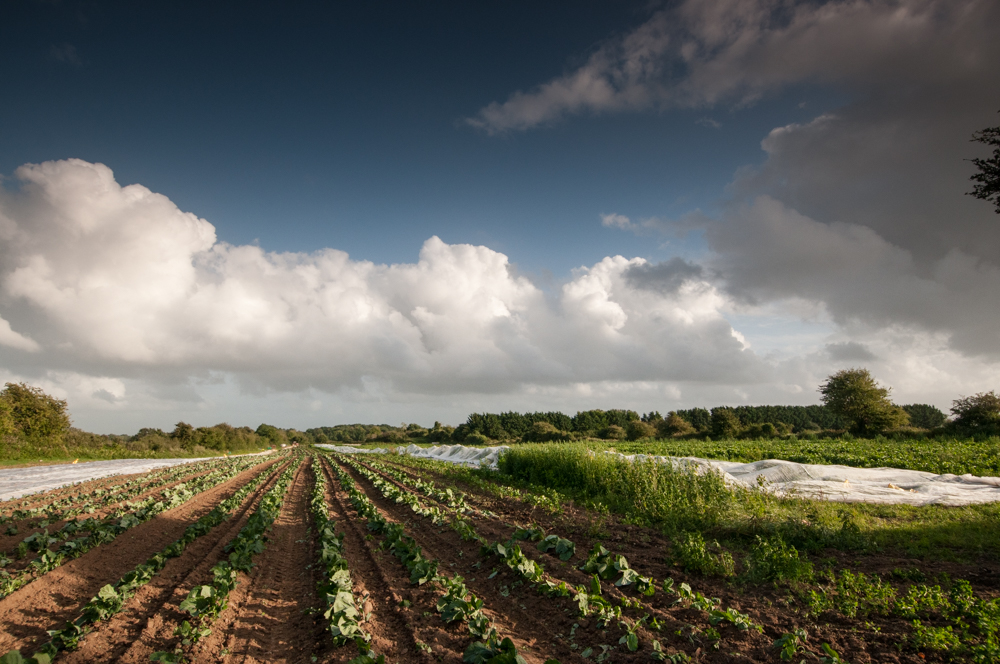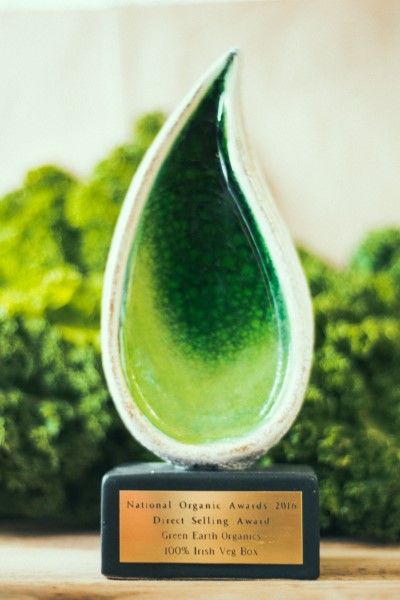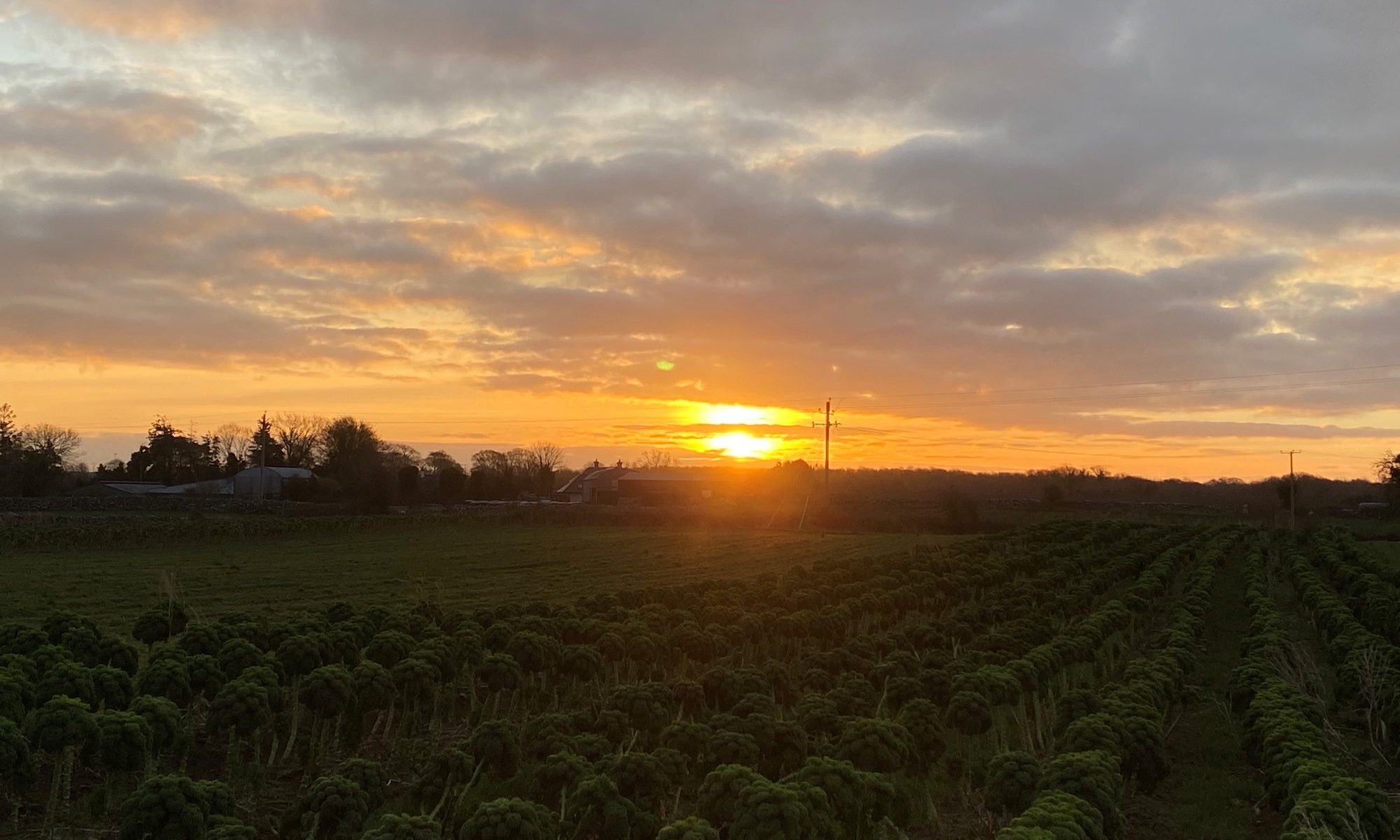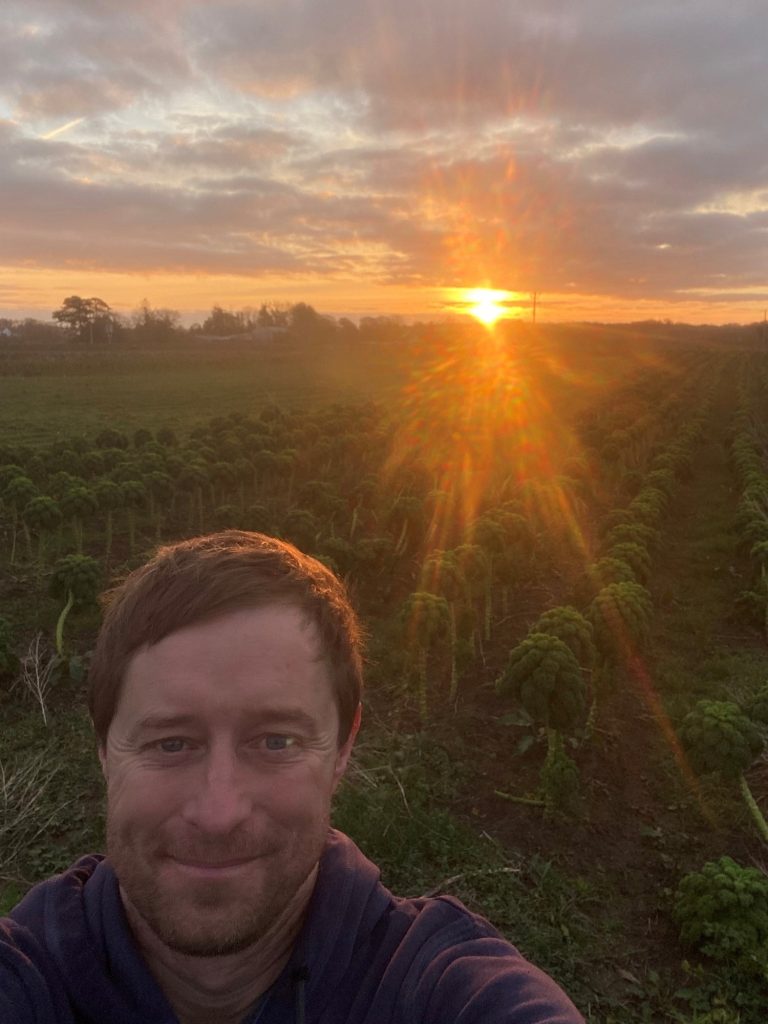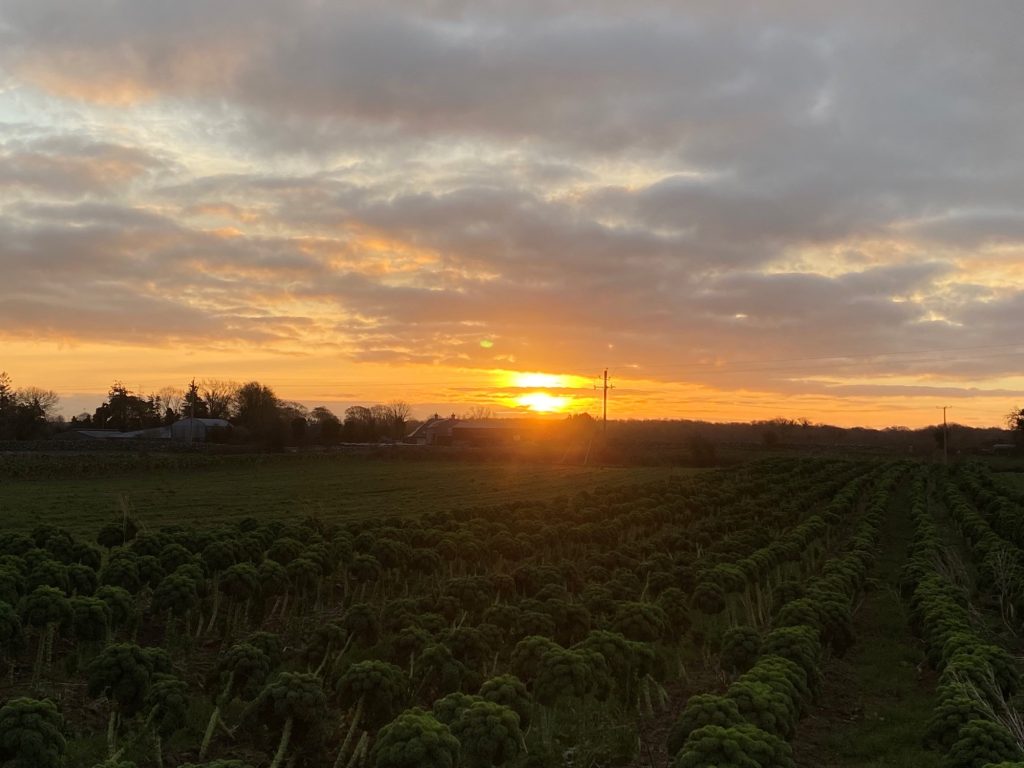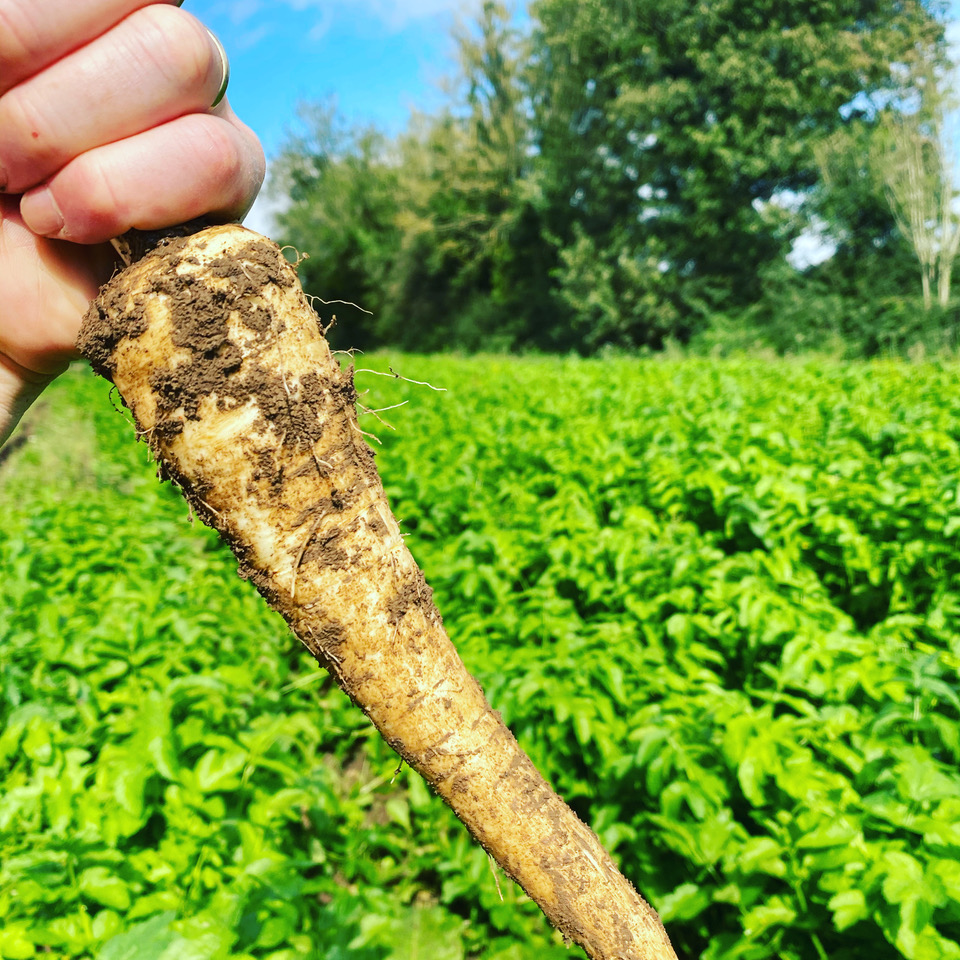
What is hiding in our food?
Simone’s oranges picked in Italy contain nothing but a good helping of Italian sunshine and healthy nutrients from his soil. Our parsnips contain nothing but a good helping of Irish rain and the healthy nutrients from our soil. What then about their conventional cousins? Hmm well as it turns out, the story there is very different.
Dirt, clay soil the stuff that gets stuck under your fingernail is good for us. It is actually pretty healthy to get it on your hands, in fact research has shown that getting your hands stuck in clay may actually ease depression. (Mycobacterium vaccae the bacterium is found in soil and may stimulate serotonin production is currently under study)
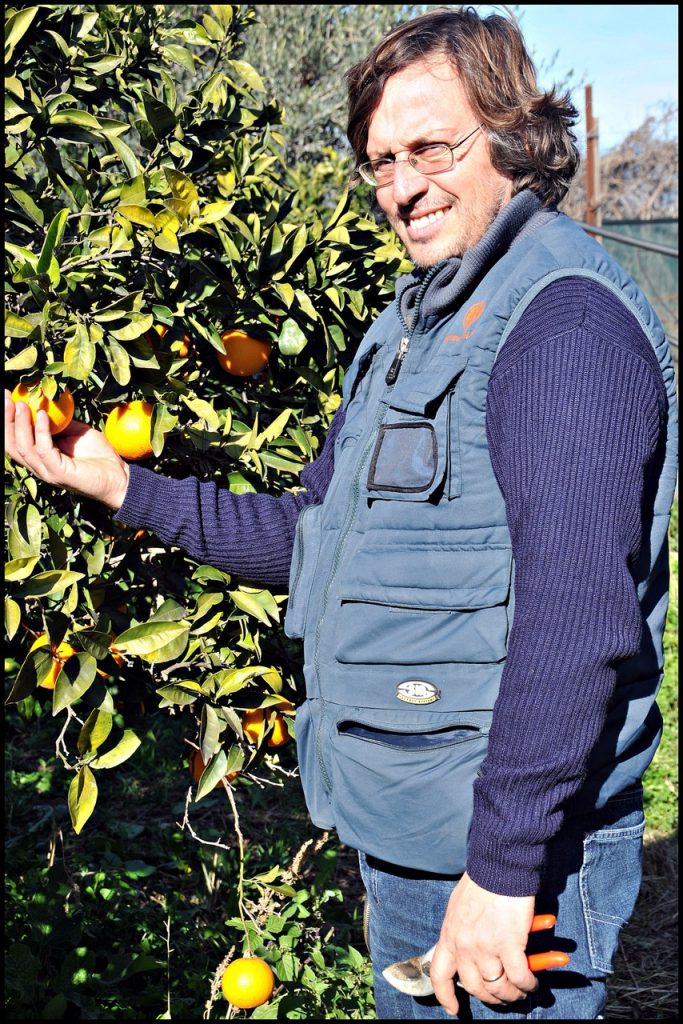
Some of our produce comes with dirt on it and we are pretty proud of that, we know it takes a little more effort in the kitchen and time can be in short supply, we know when you have a busy household the last thing you want to do is to wash dirty carrots or parsnips. We get that, I know the feeling and sometimes I reach for that bag of washed carrots and am just thankful they are washed!
But here’s the thing we are not hiding anything, you can see the dirt and it has a very important function. It is a natural preservative, it keeps the veg fresh, it keeps the flavour in. You can smell the freshness when you wash one of our dirty parsnips. Crucially leaving dirt on your veg actually helps reduce food waste!
The great thing of course about soil is it can be washed off.
This unfortunately is not the case with chemicals. Many are systemic in nature, (simply put they get inside the plant or food and stay there).
Some chemicals are applied to the skins of fruits and vegetables to preserve them. The most commonly known ones are the fungicides mixed into the waxes and applied to citrus fruit.
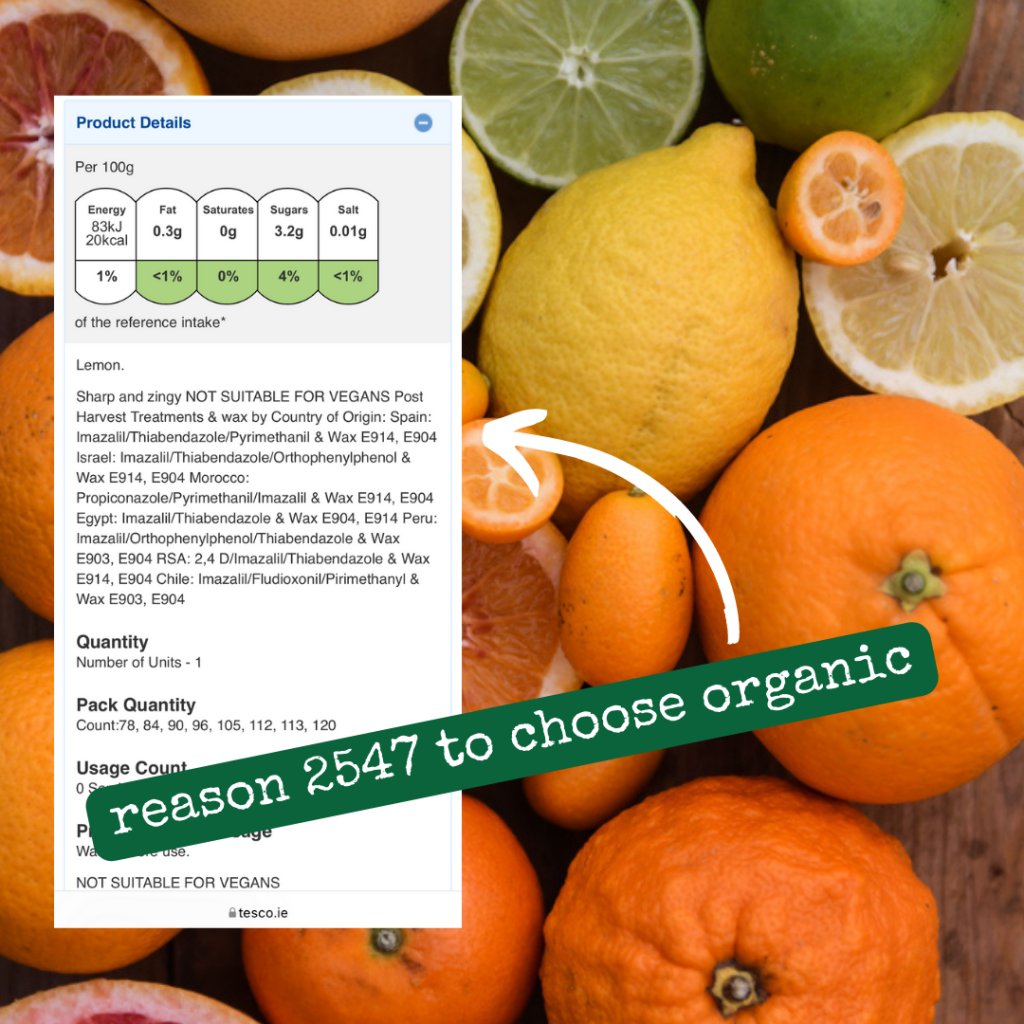
We stumbled upon some pretty eye-watering facts during the week. It turns out that one of the big supermarkets are now kindly putting the names of the chemicals mixed in with the waxes on their loose citrus fruit on their website. Have a look see for yourself. (Check out the description on loose lemons on this retailer’s website. I’ll give you a hint the name of the multinational supermarket begins with T.)
This is what is found on your conventional (Non organic) LEMONS:
Here is the list we found (Depending on country of origin, the treatment varies)
Spain: Imazalil/Thiabendazole/Pyrimethanil & Wax E914, E904
Morocco: Propiconazole/Pyrimethanil/Imazalil & Wax E914, E904
Egypt: Imazalil/Thiabendazole & Wax E904, E914
RSA: 2,4 D/Imazalil/Thiabendazole & Wax E914, E904
And if you were wondering what these wonderful preserving chemicals may do to us unsuspecting humans here are some fun facts:
Imazalil is a suspected carcinogen and a probable endocrine disrupter (compounds that mimic or inhibit the body’s hormones, generally not good for us)
Thiabendazole is a probable endocrine disrupter
2,4-D falls into a class of compounds called endocrine-disrupting chemicals.
Here is another fun fact, the amount allowed in a piece of fruit is set by something called the MRL (Maximum residue limit) and this is generally set by what works to kill a pest and not what is safe for human consumption. (Recently The EU proposed reducing the MRL for Imazalil to 0.01mg/kg for citrus from 4mg/kg, but this was overturned by growers, so what is the safe limit?)
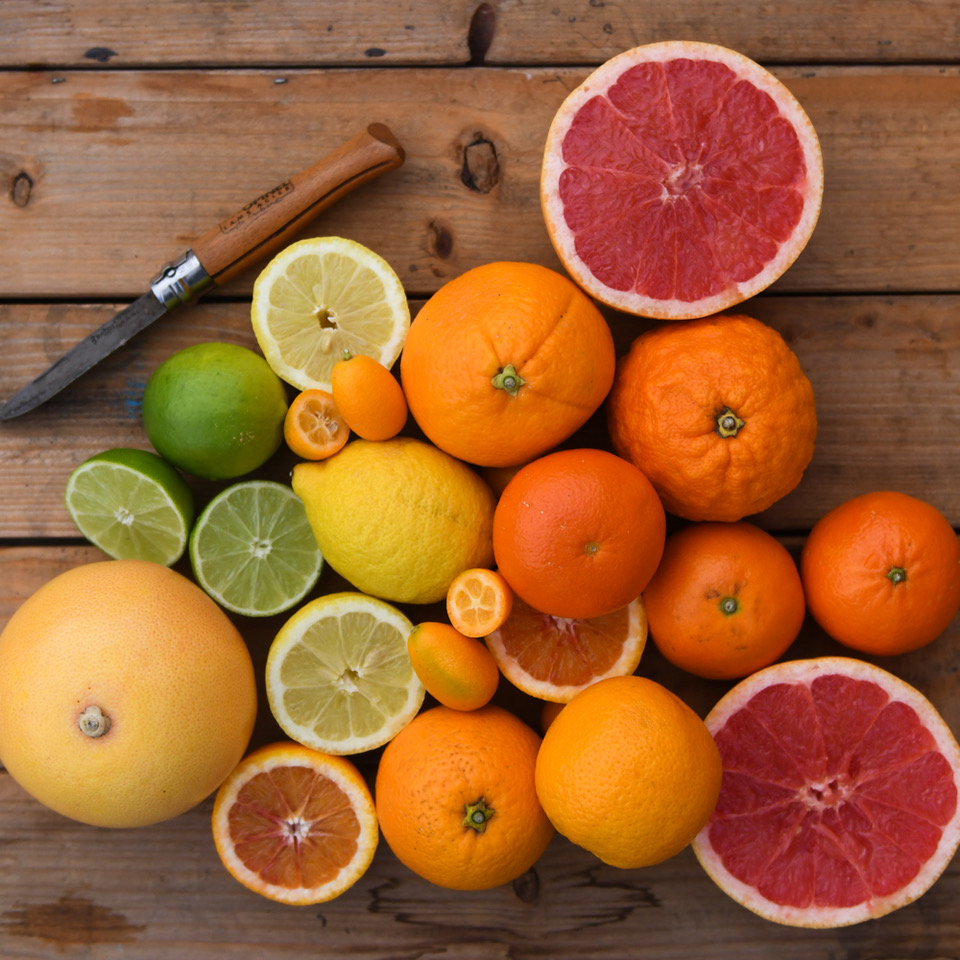
So, unlike the dirt on our parsnips which is harmless, and could be argued is actually improving our health, extending shelf life, locking in flavour and can be seen, these hidden compounds reside on much of the conventional fruit that is purchased in supermarkets and is bad for our health. It is refreshing to see at last that there is some transparency creeping into our food supply chain.
Kenneth

